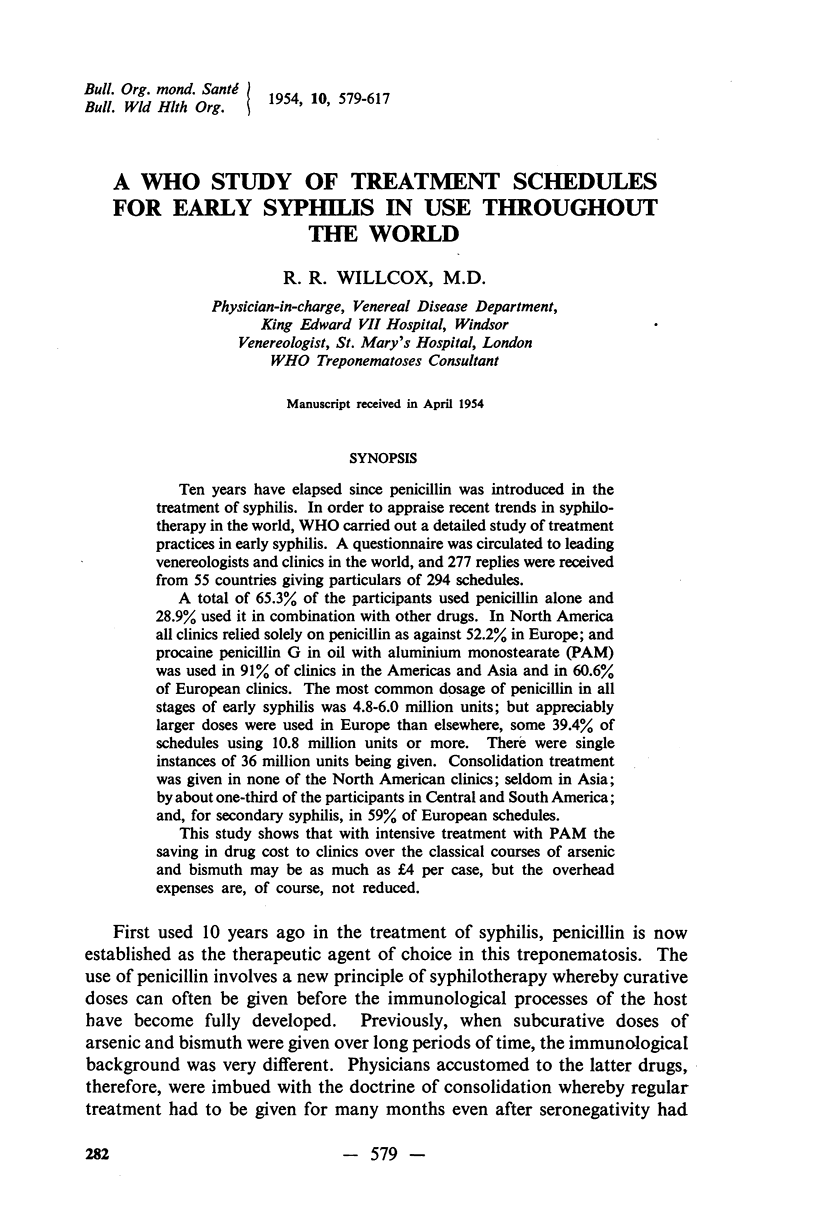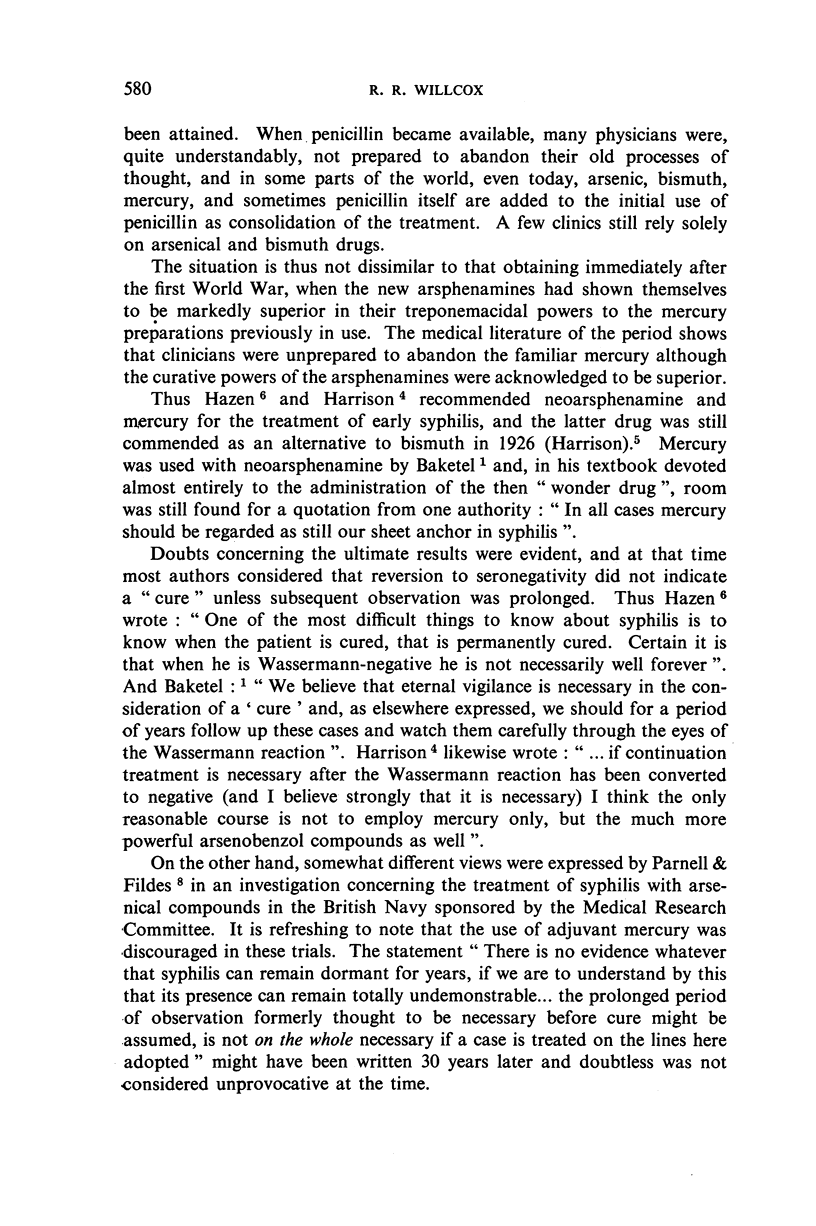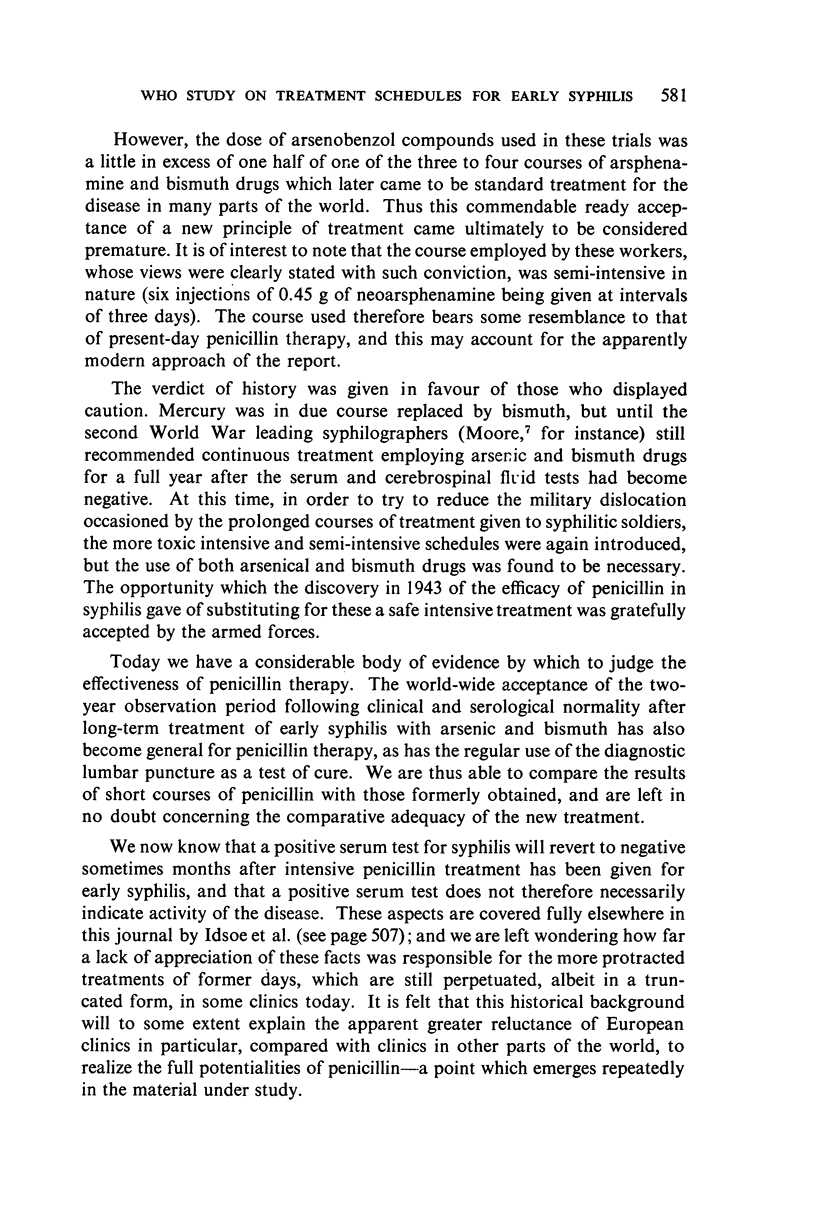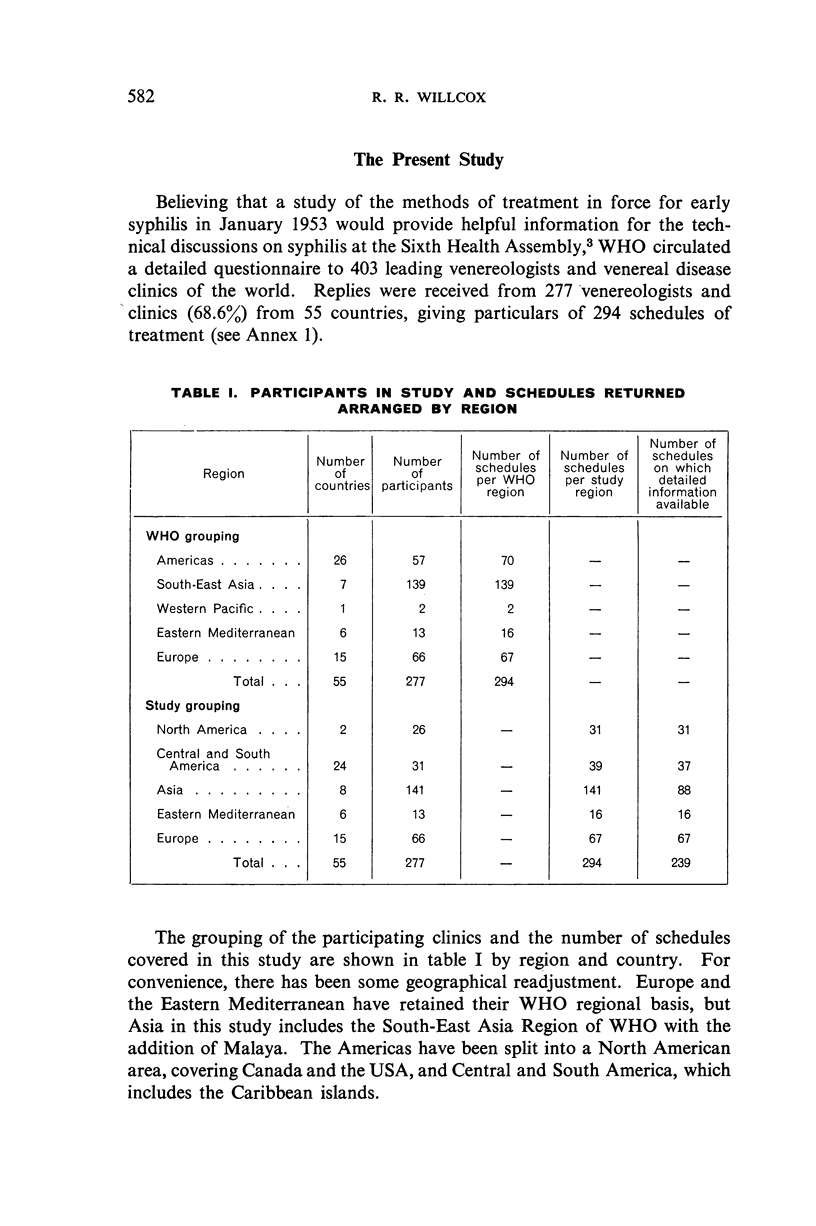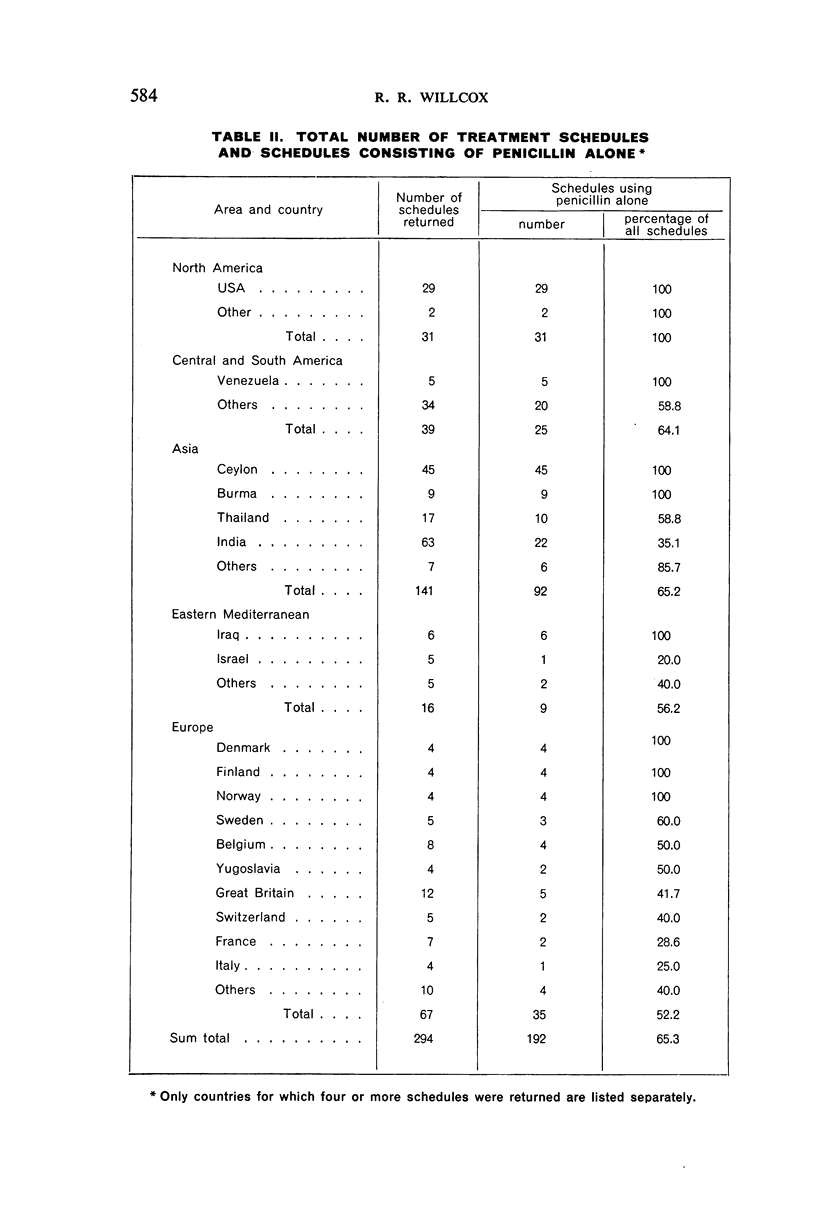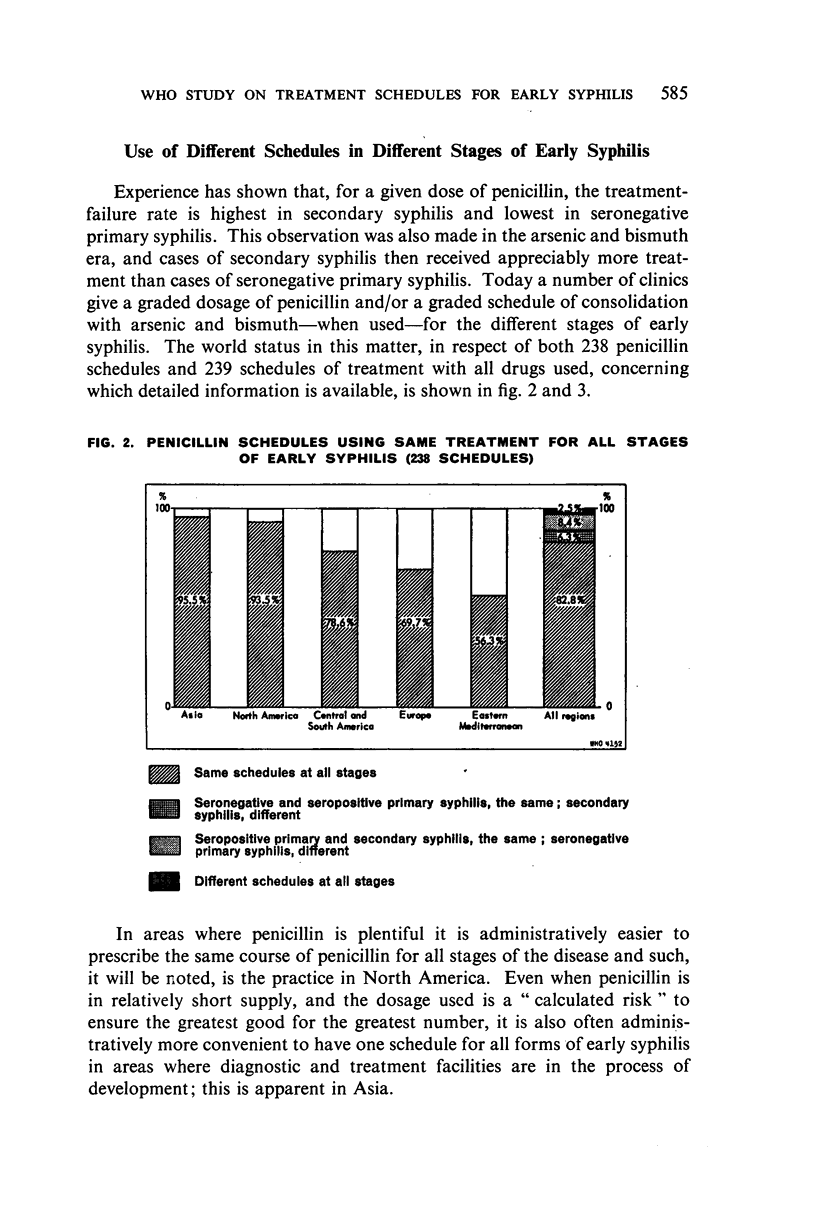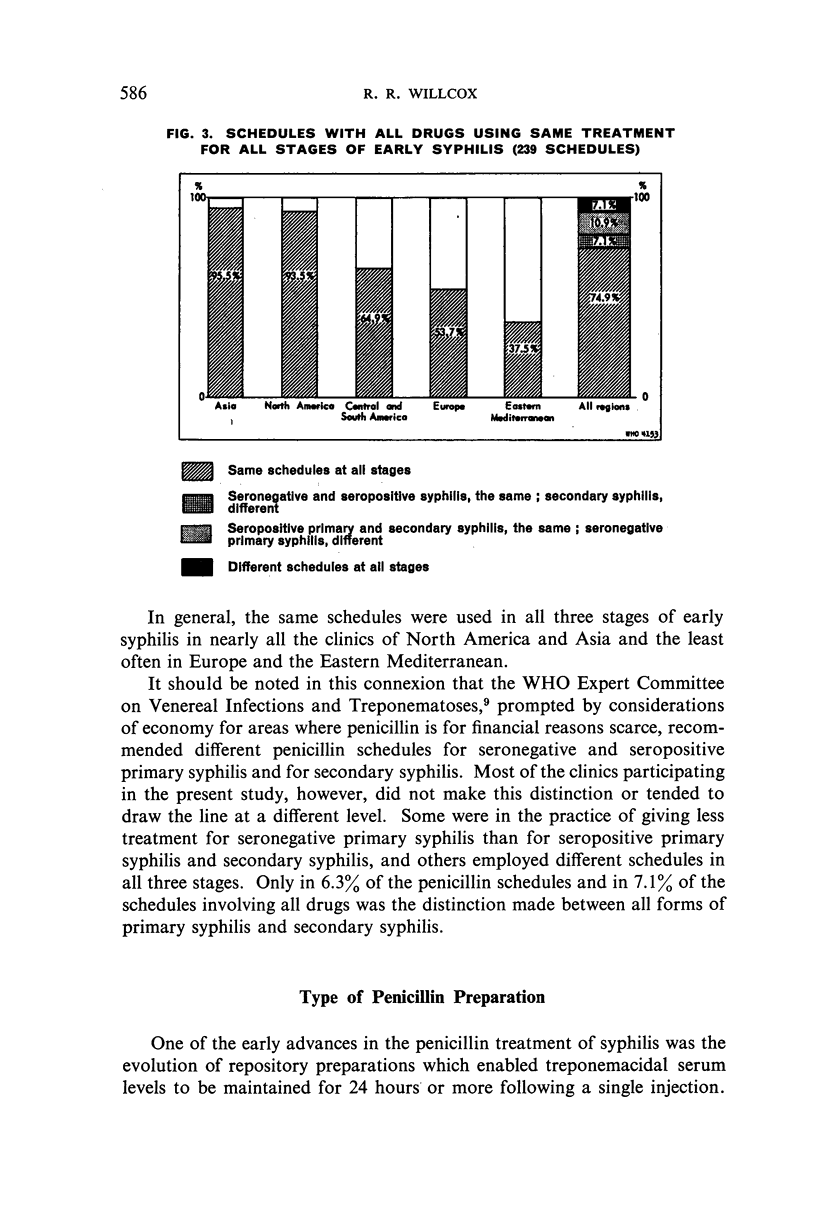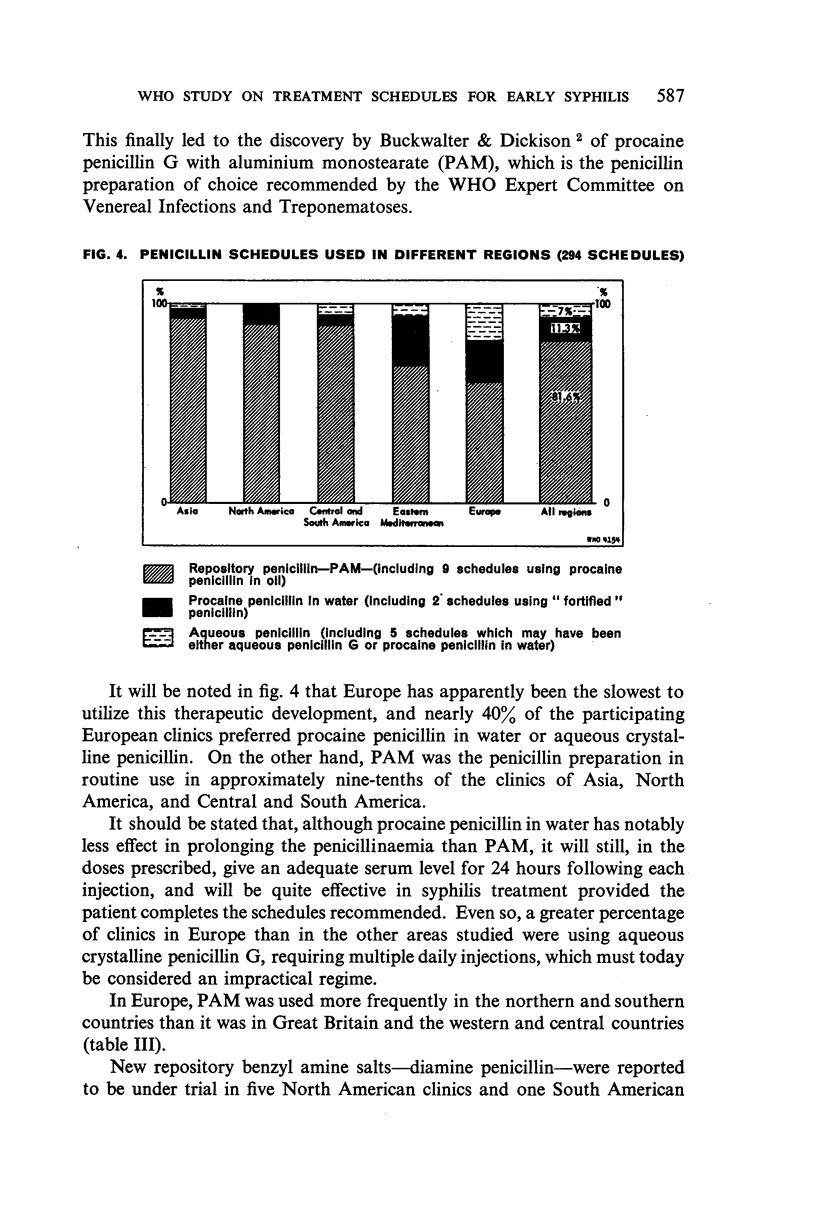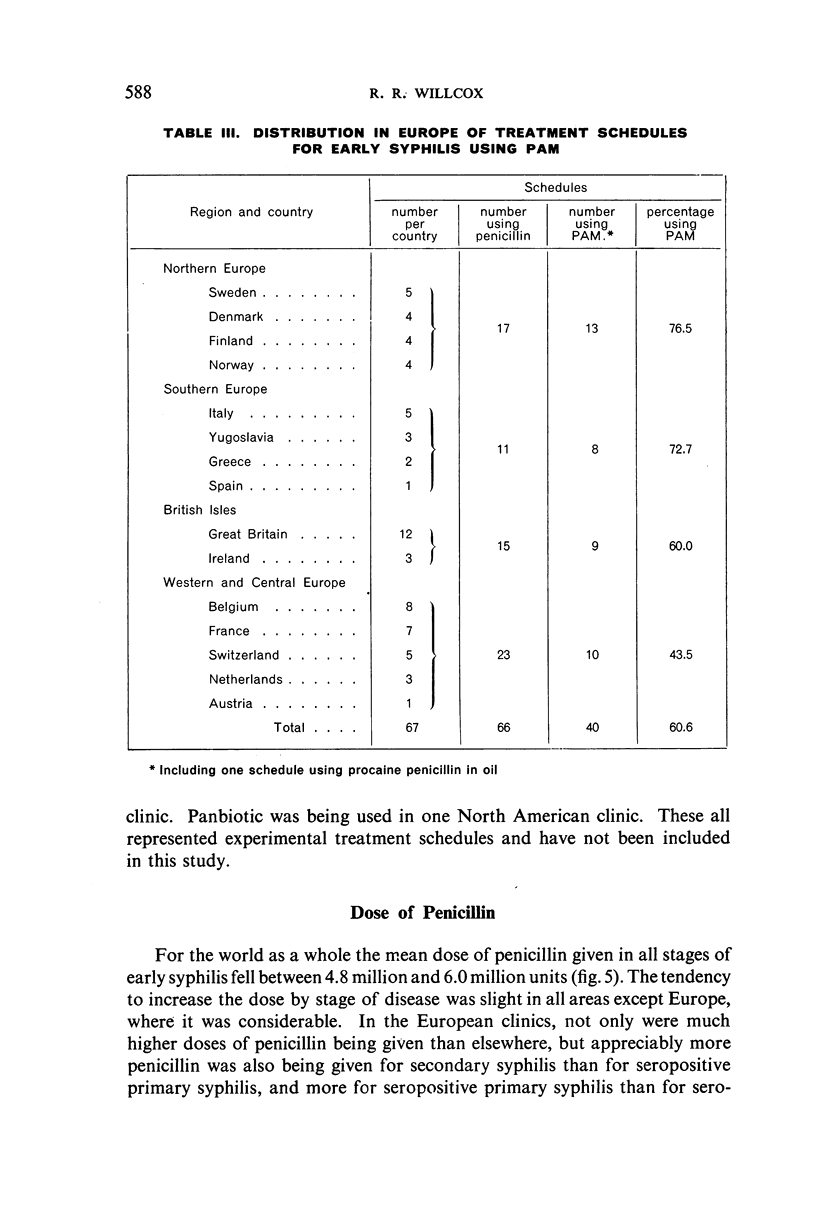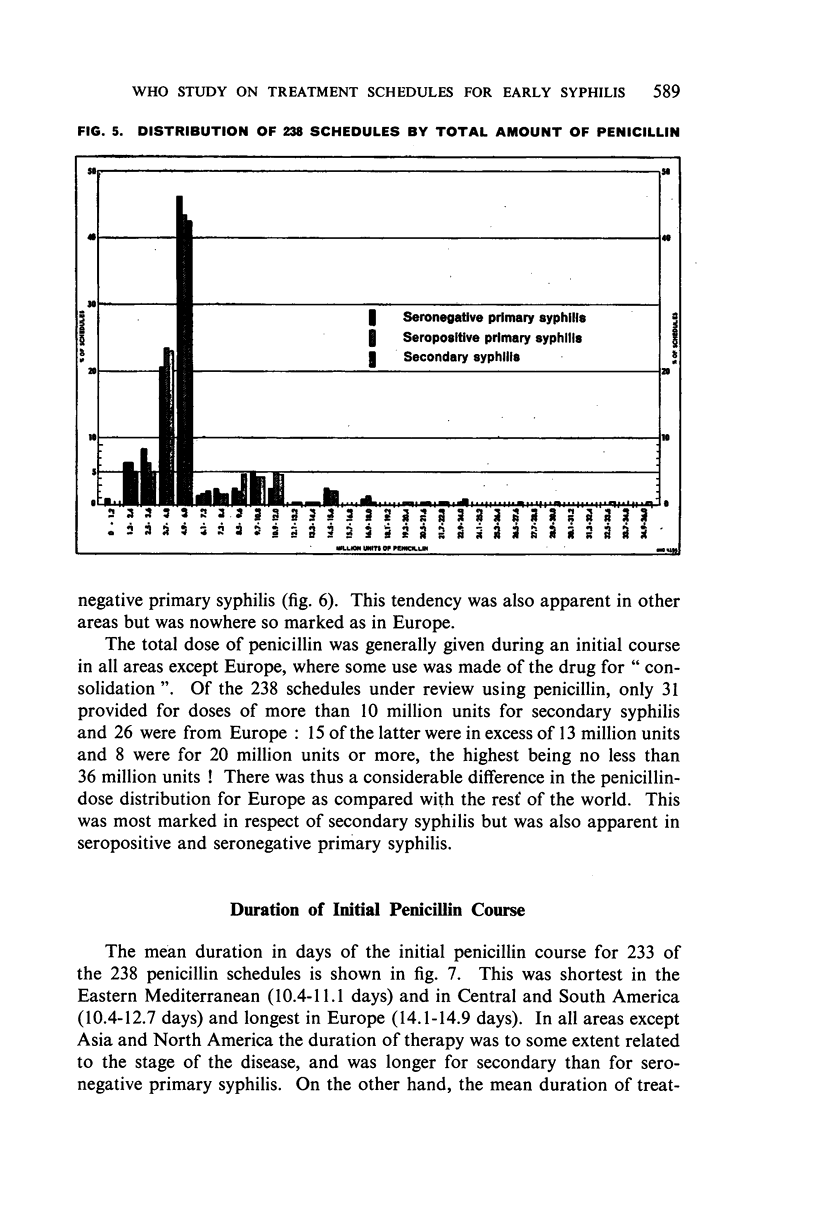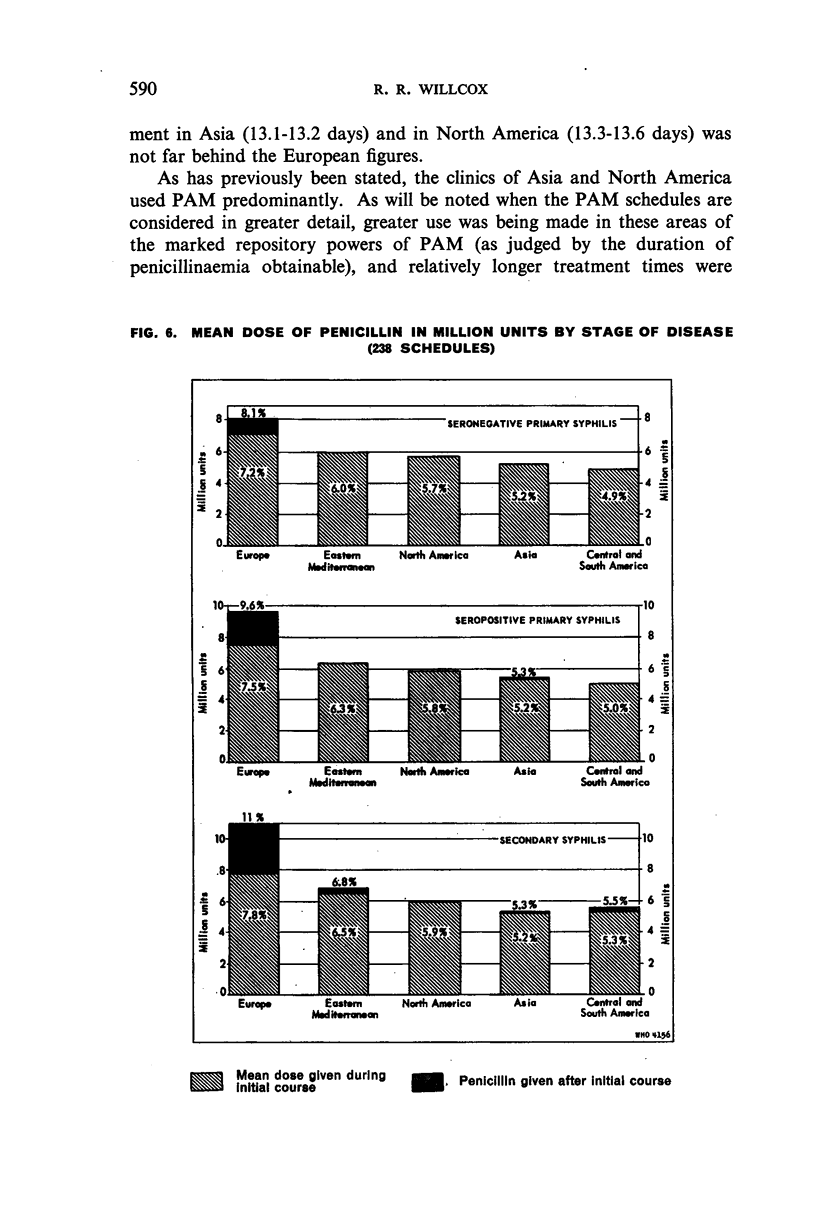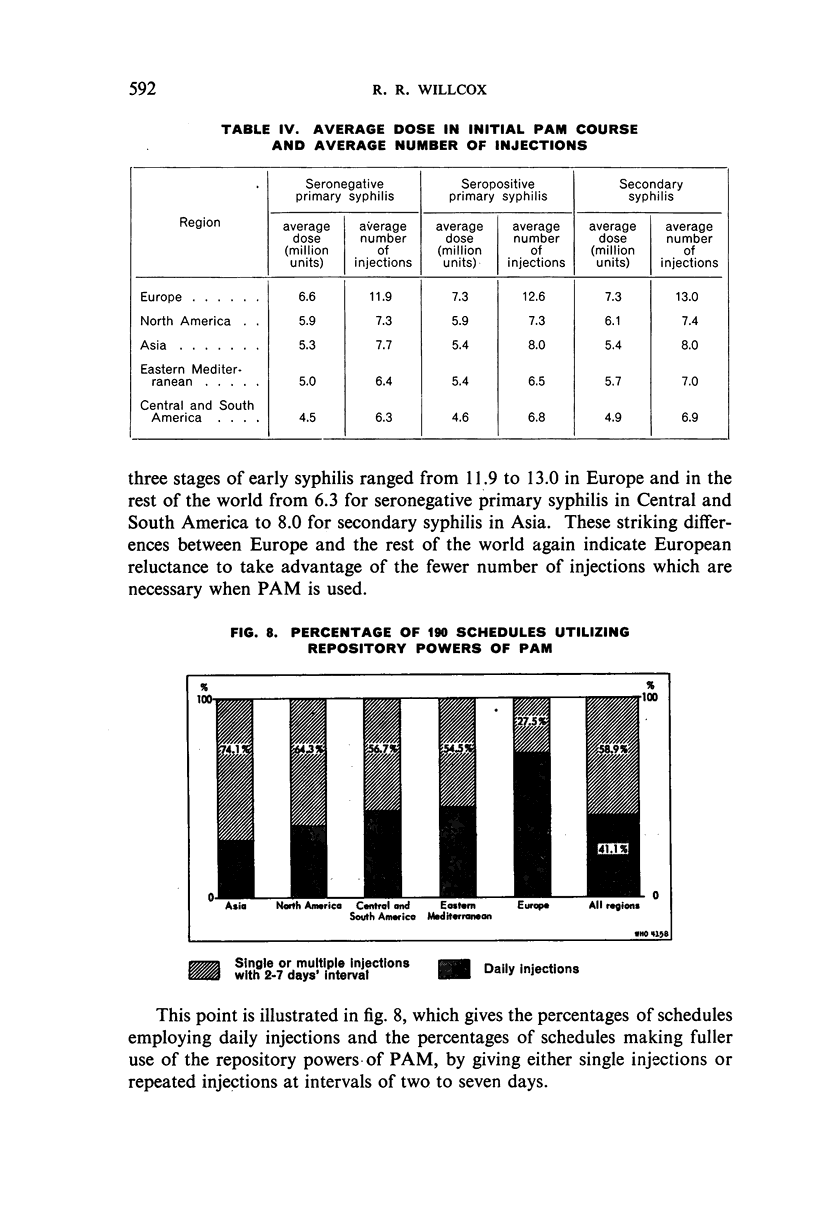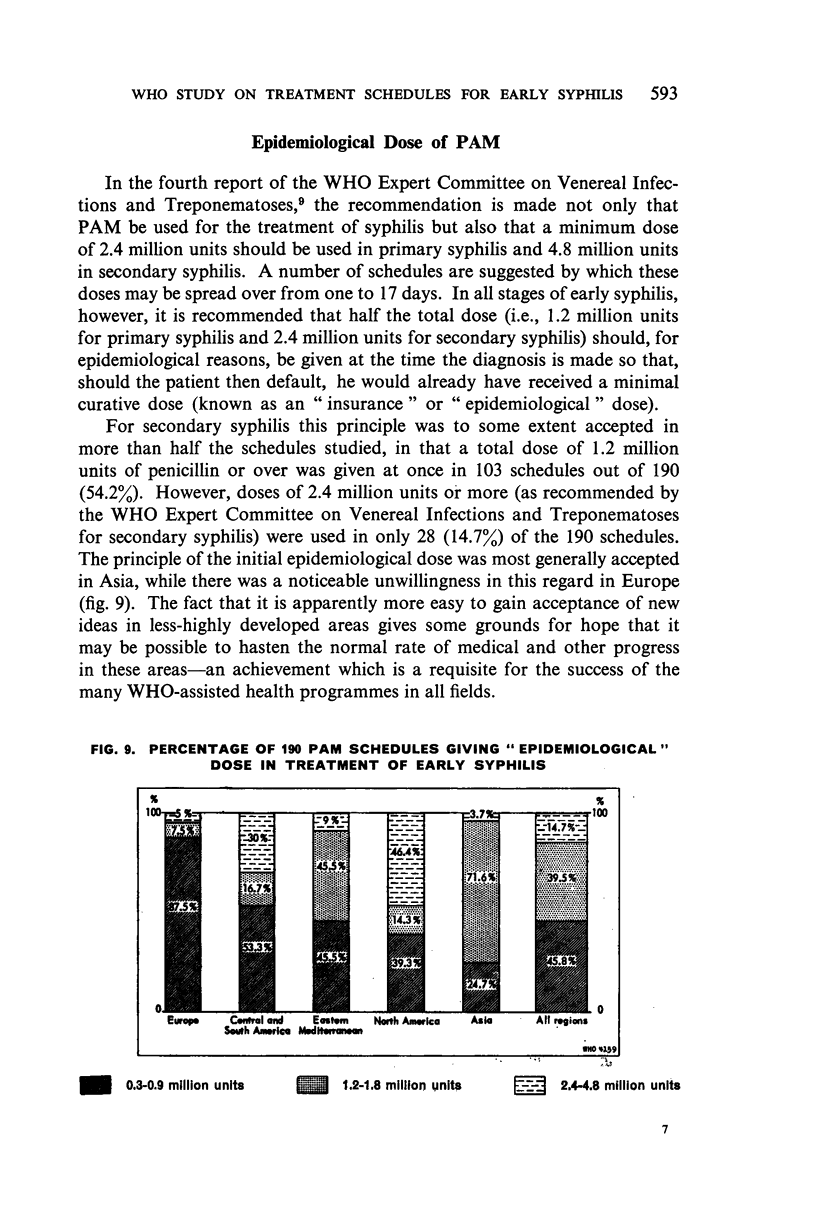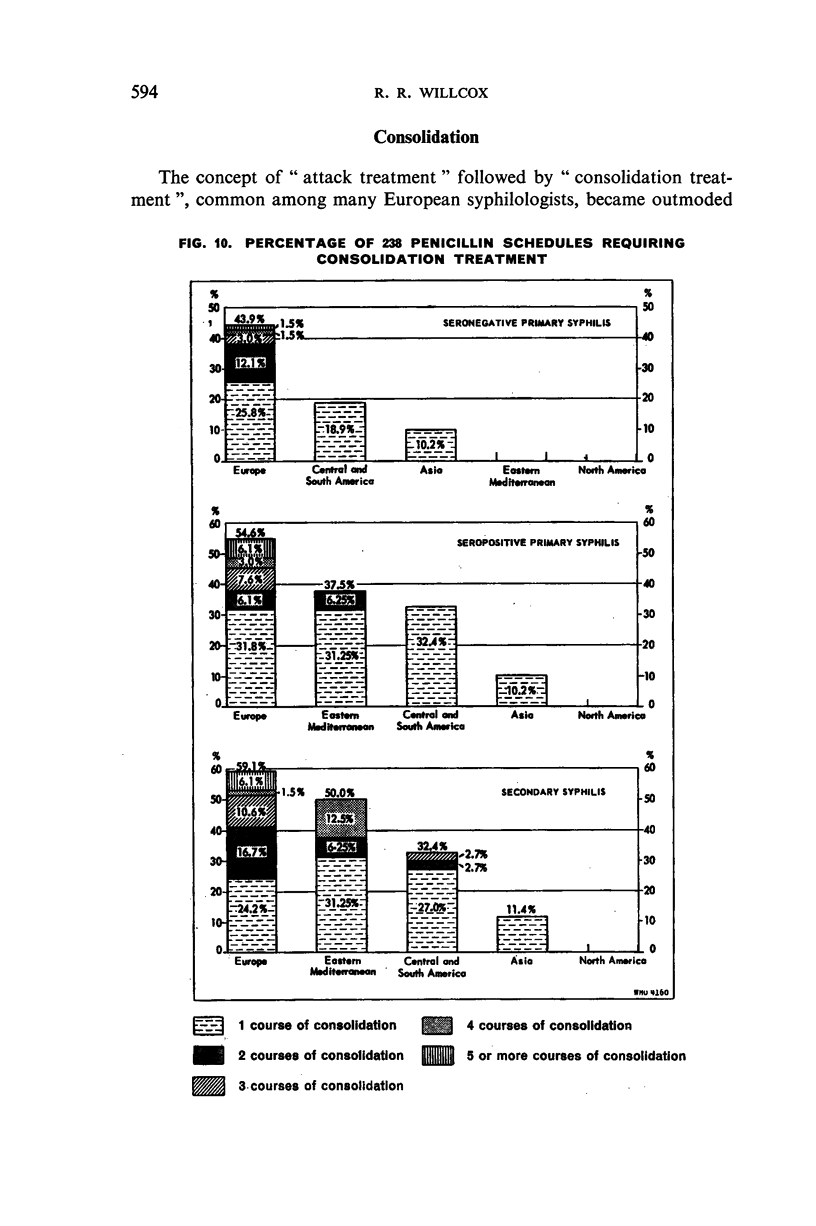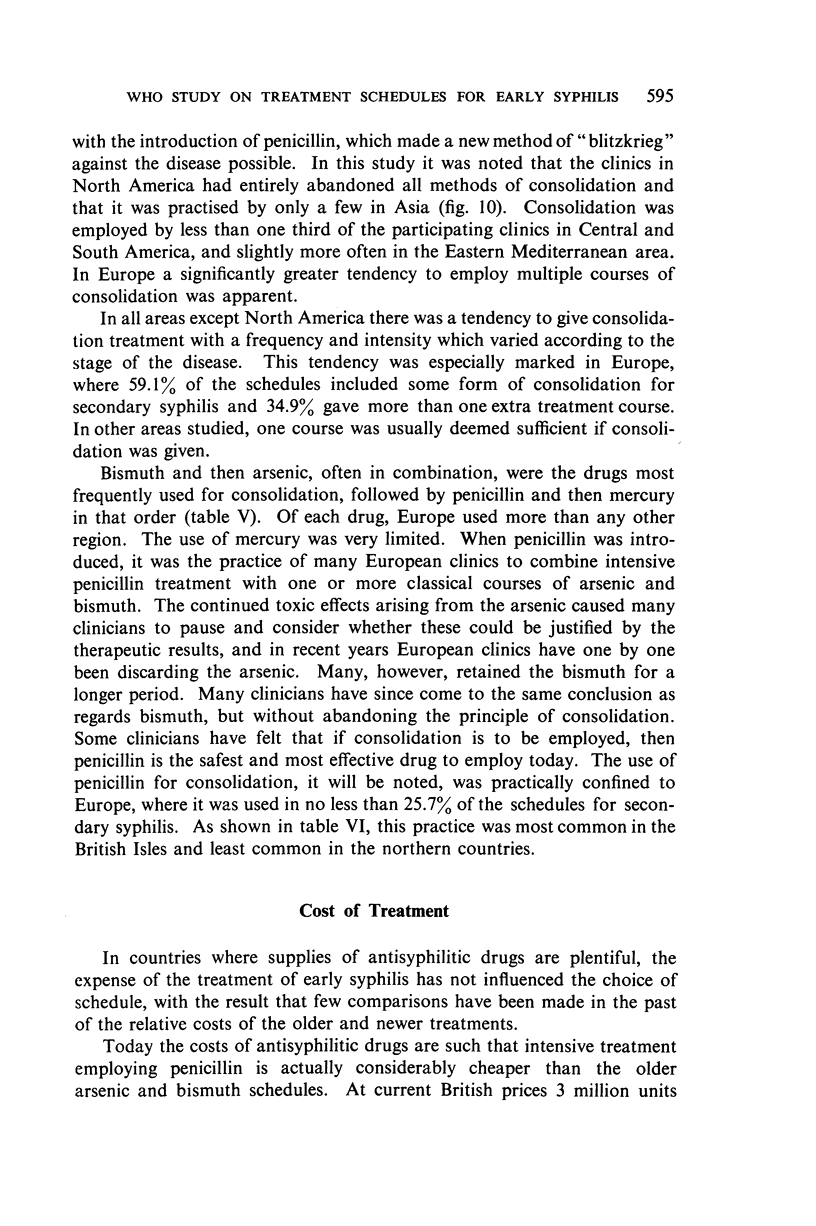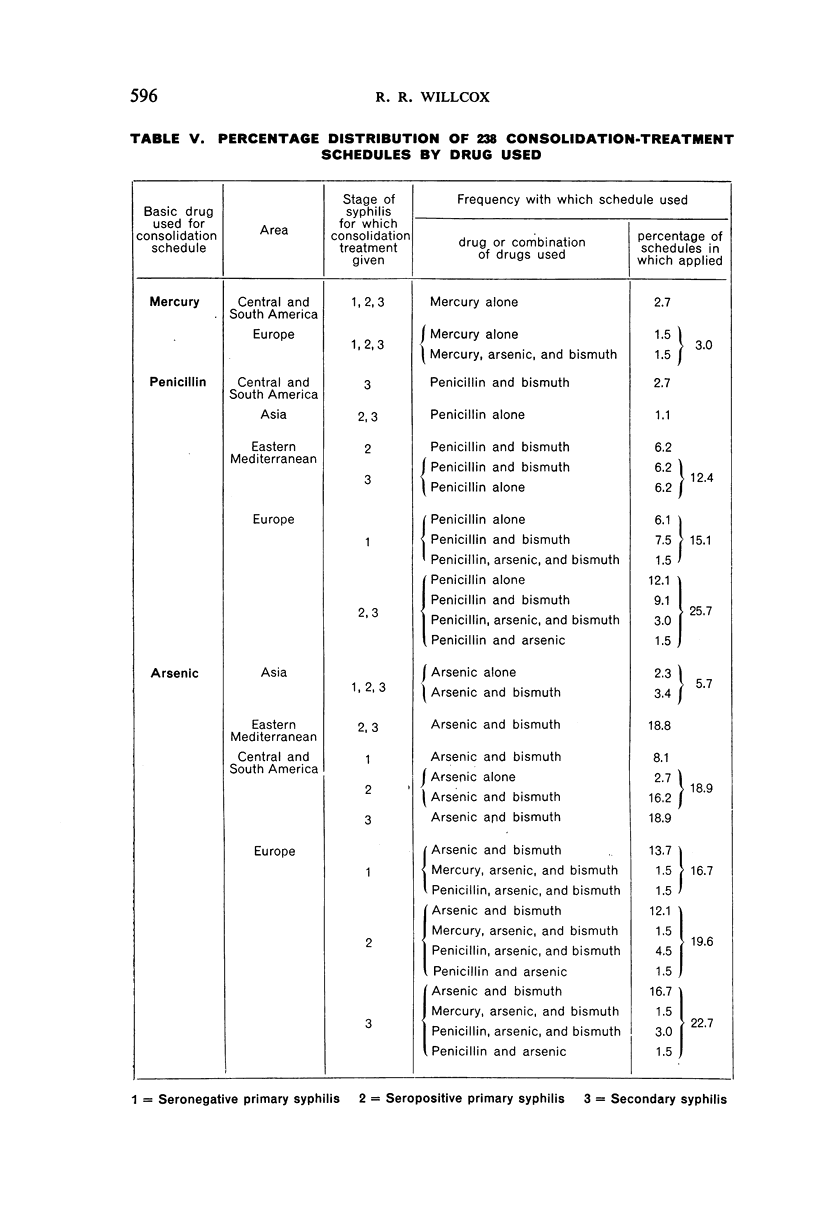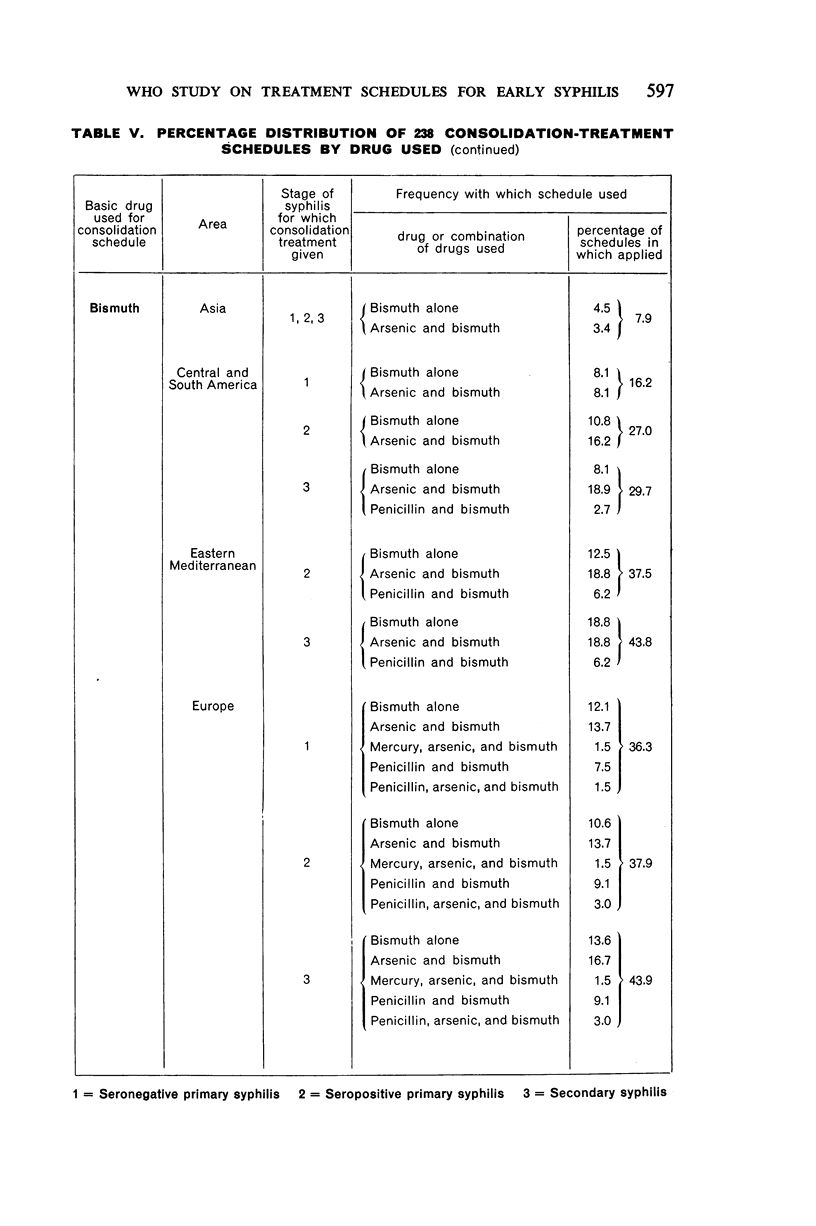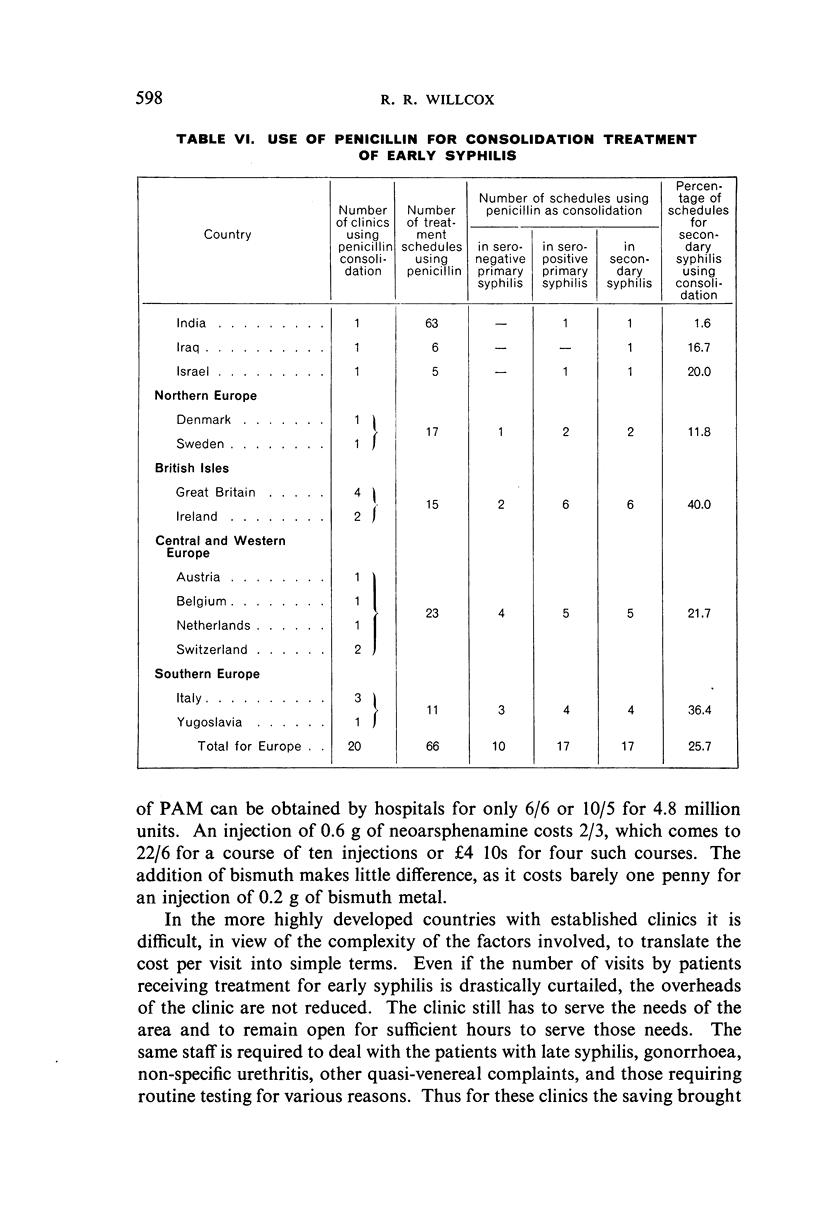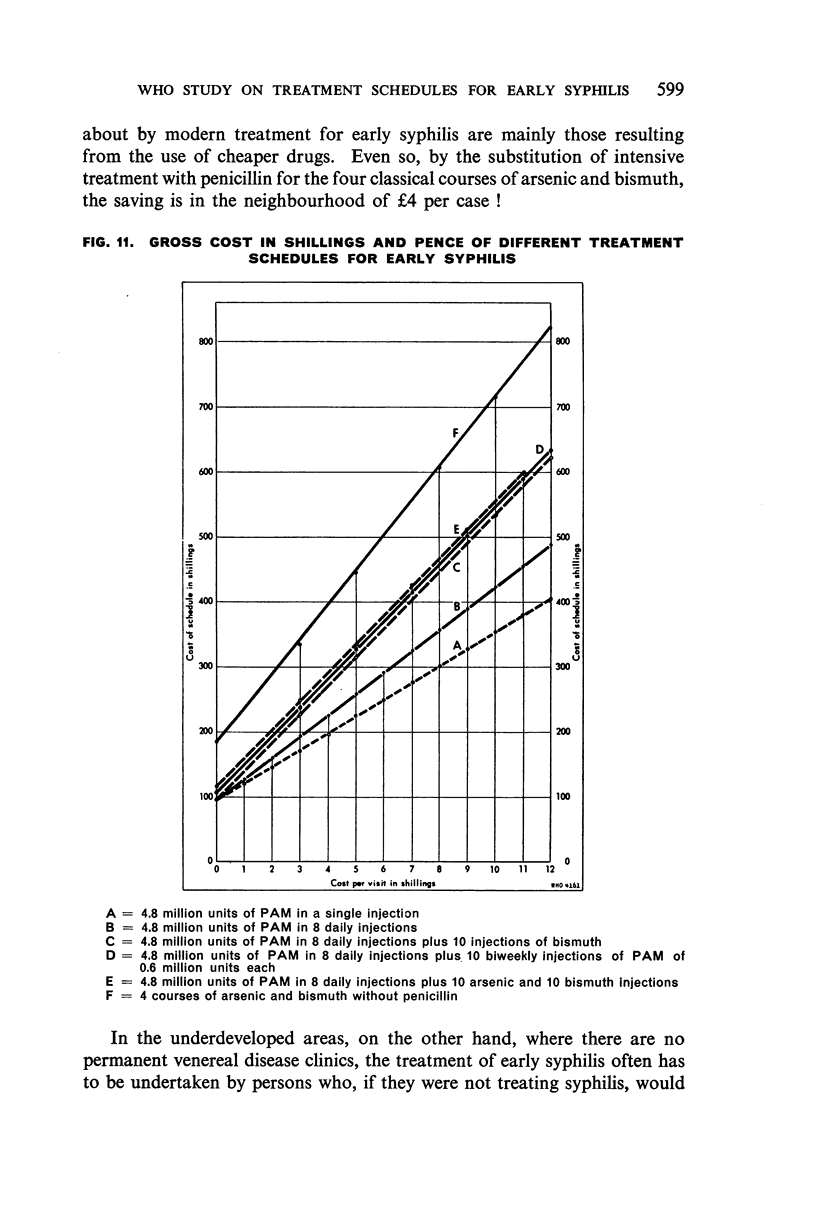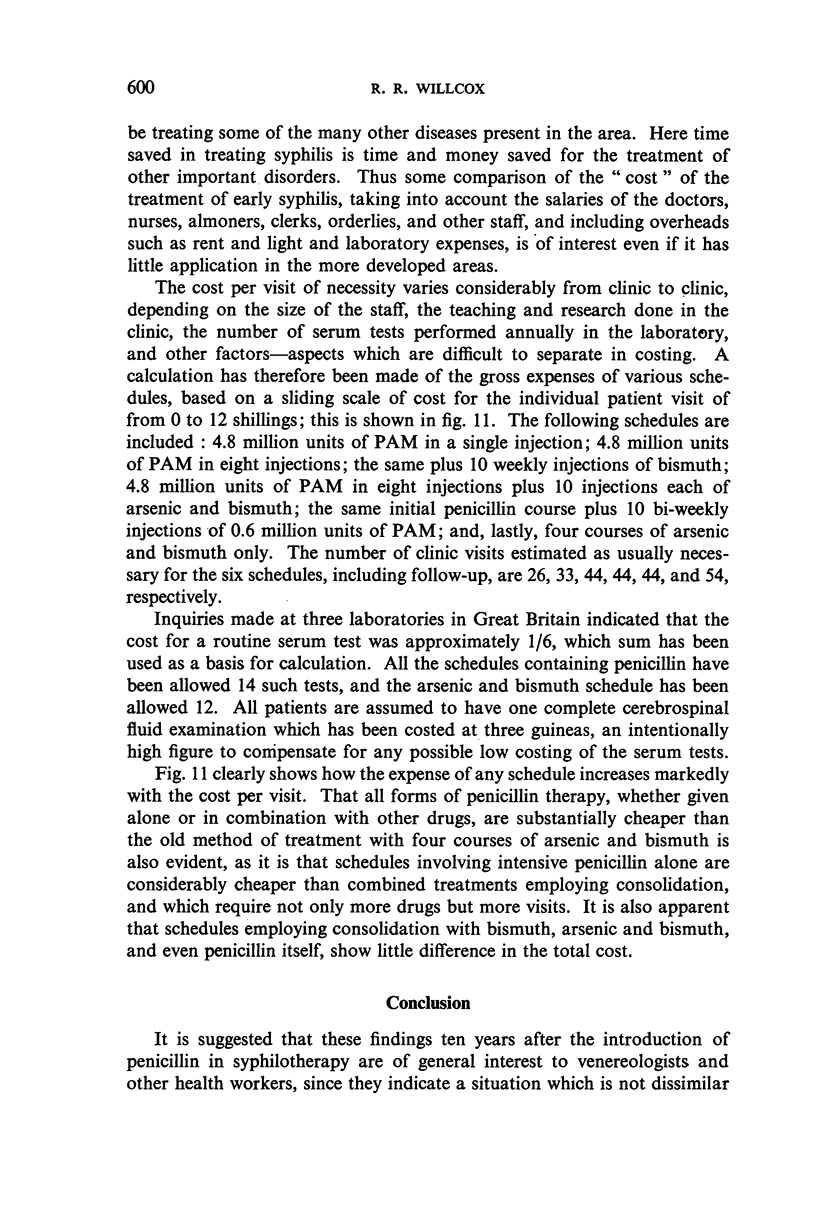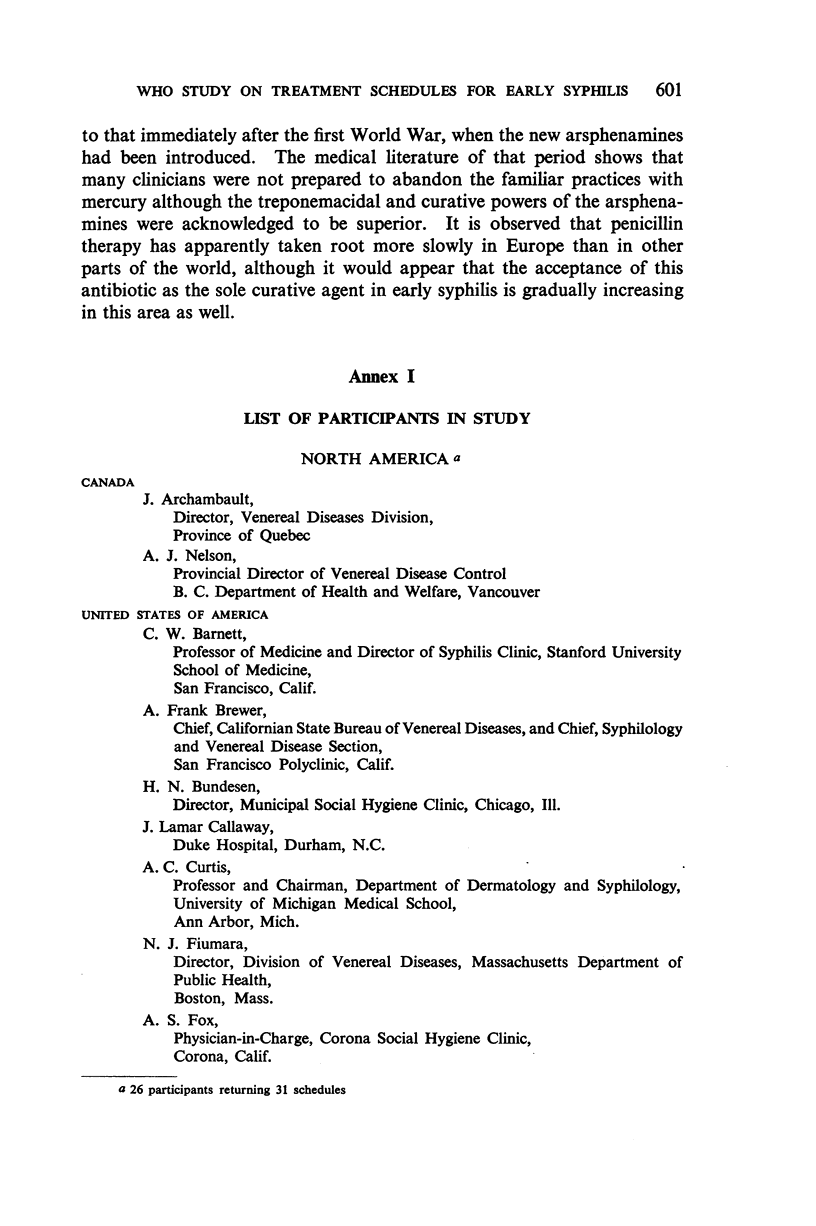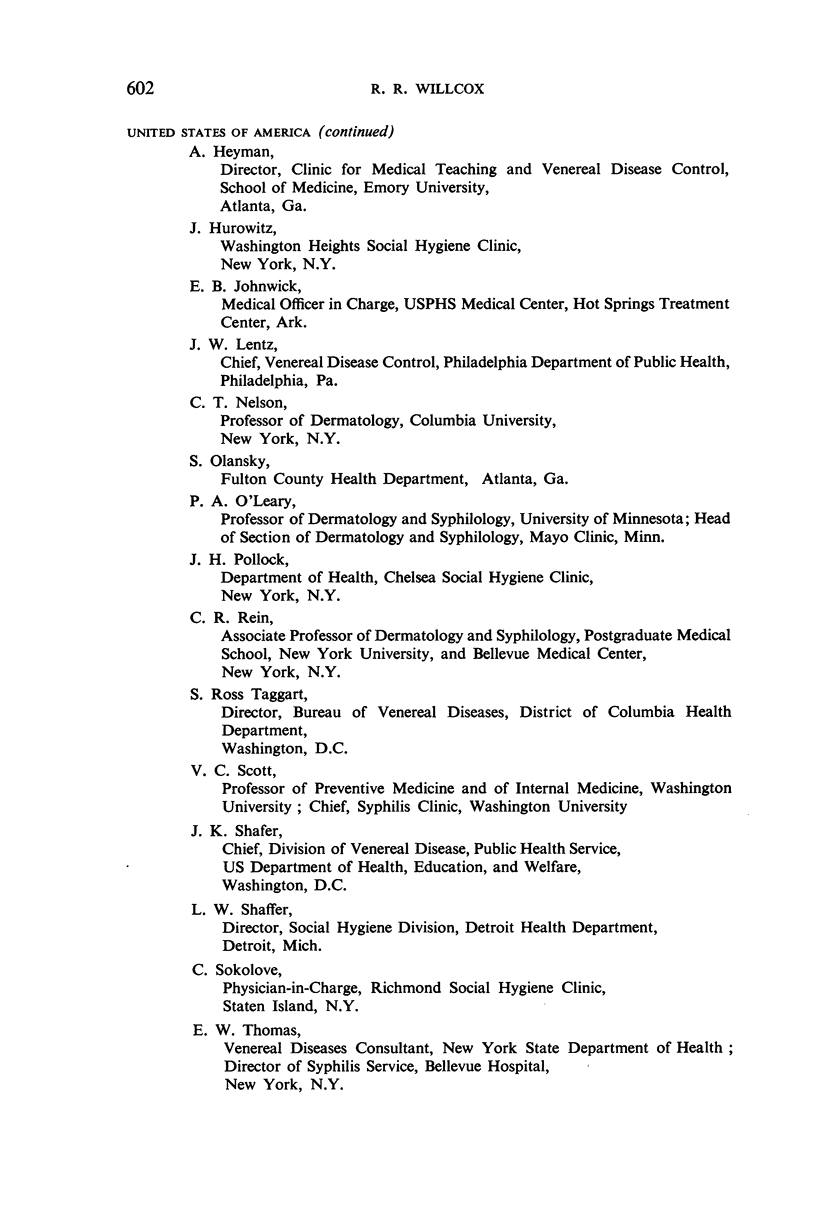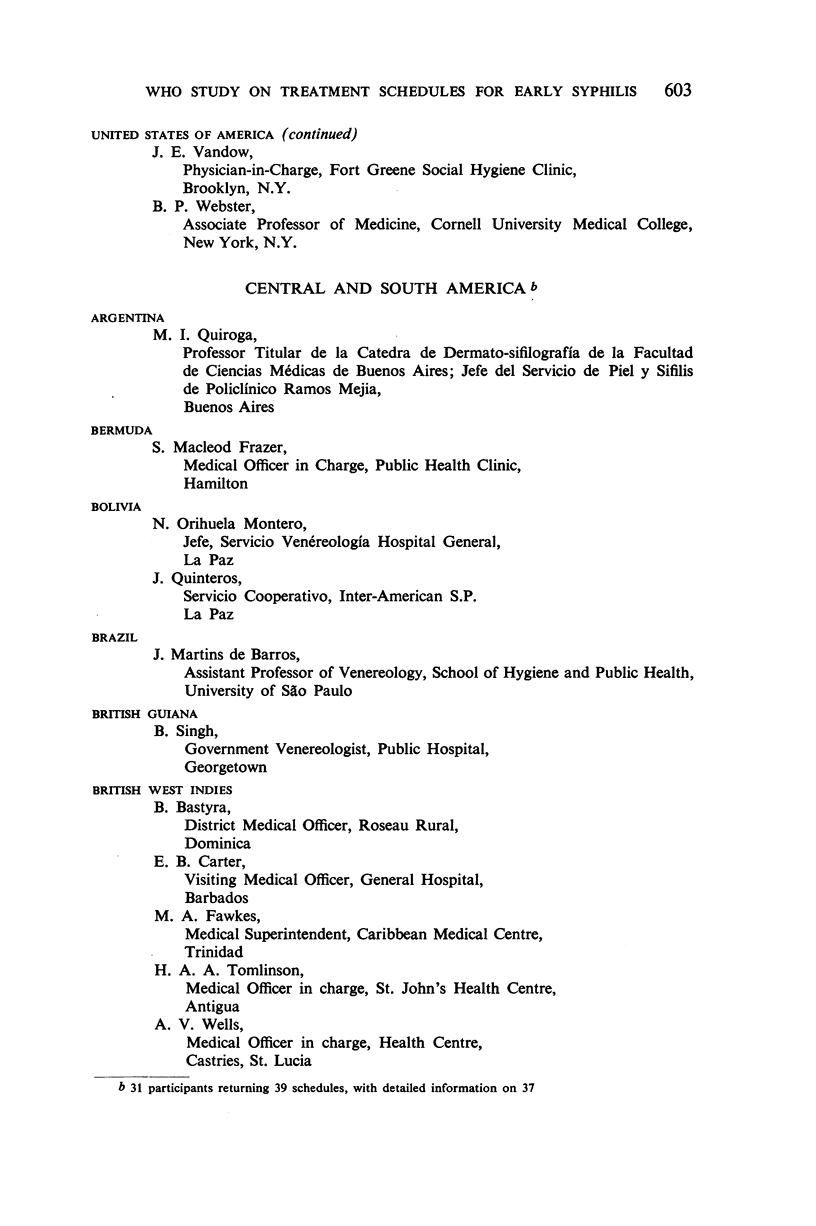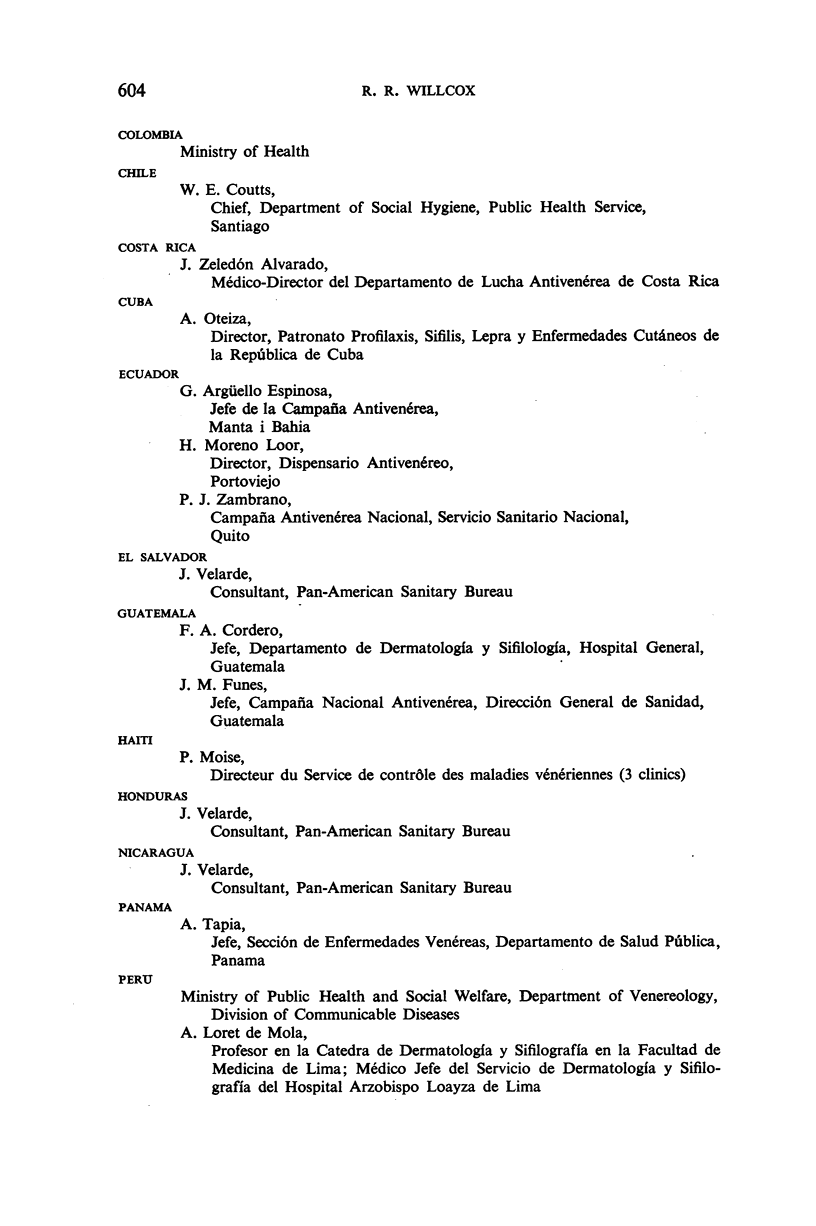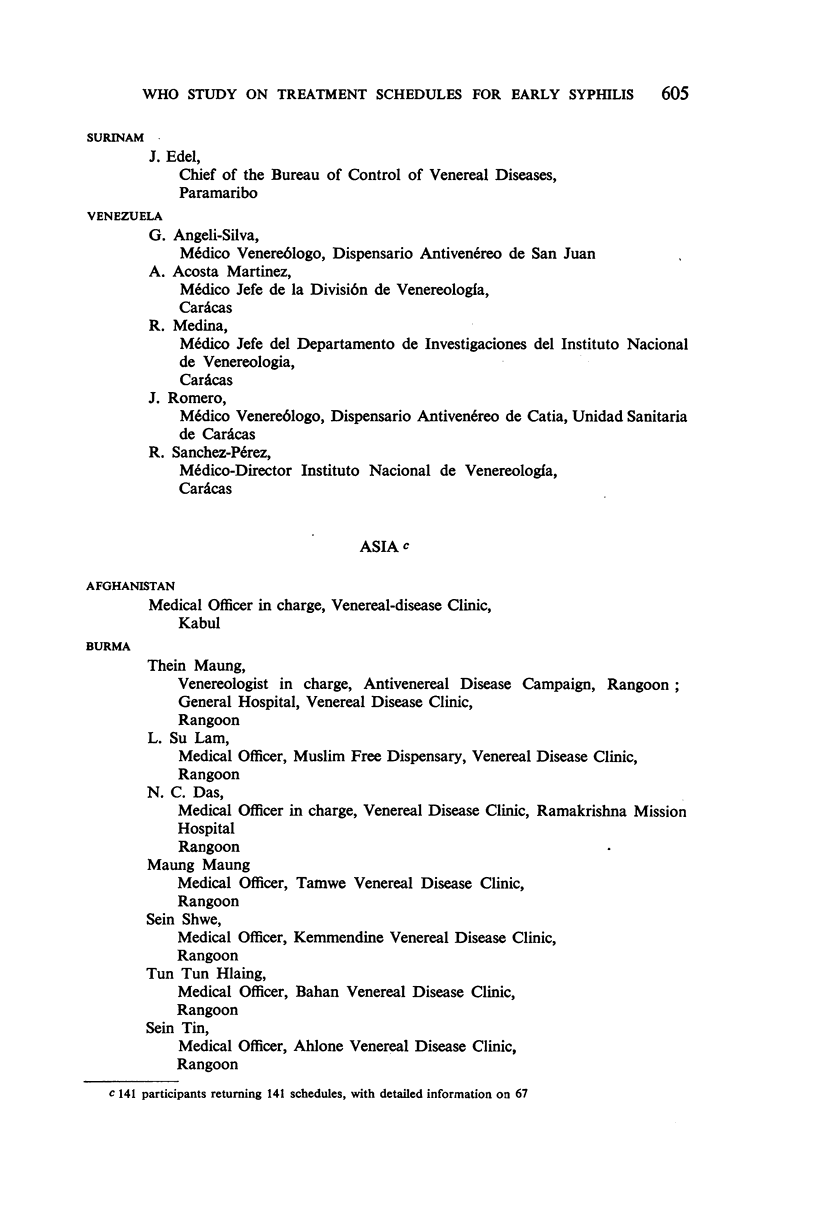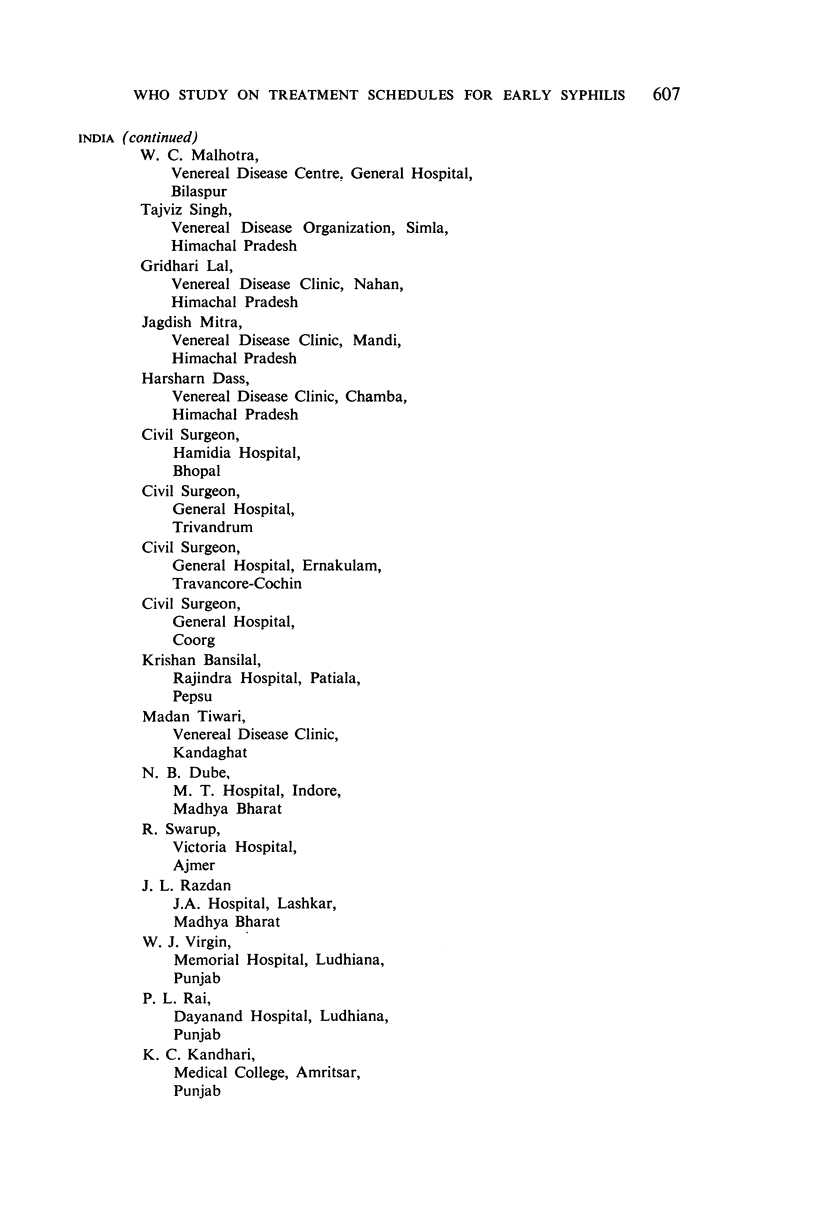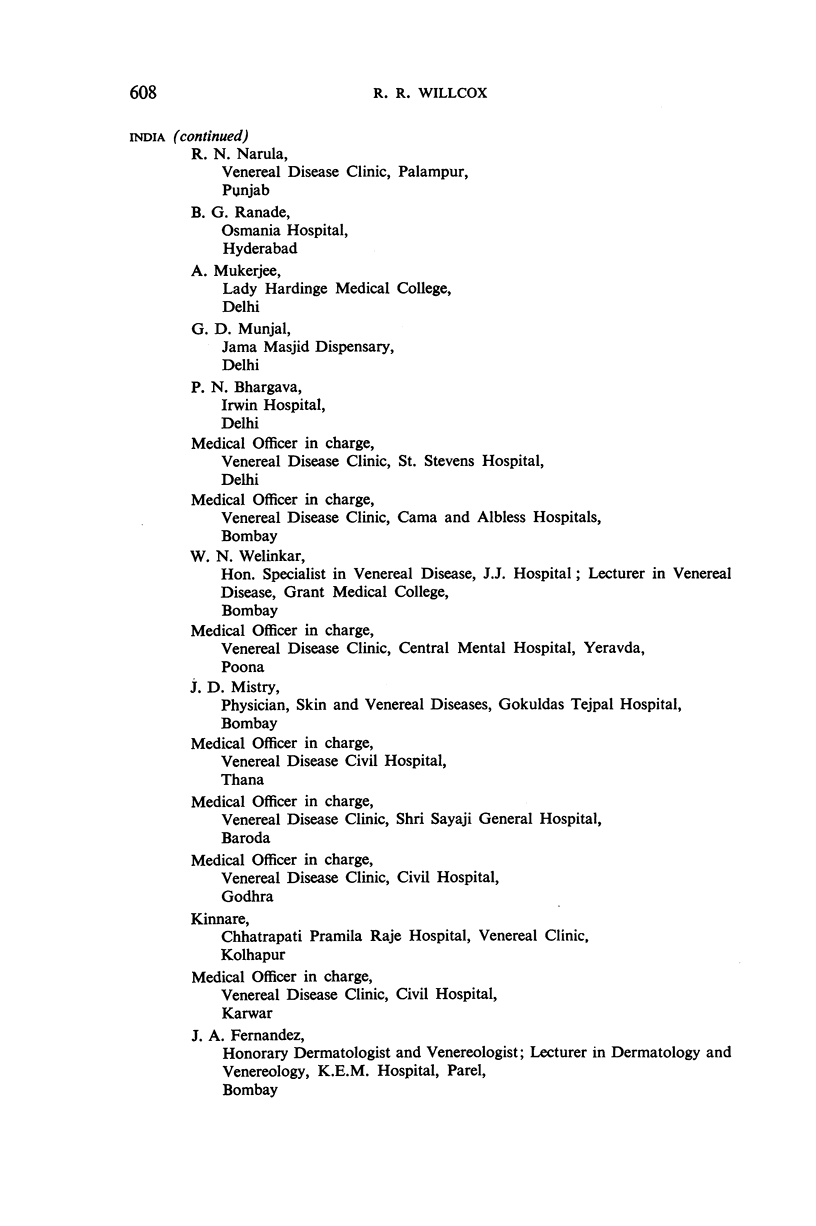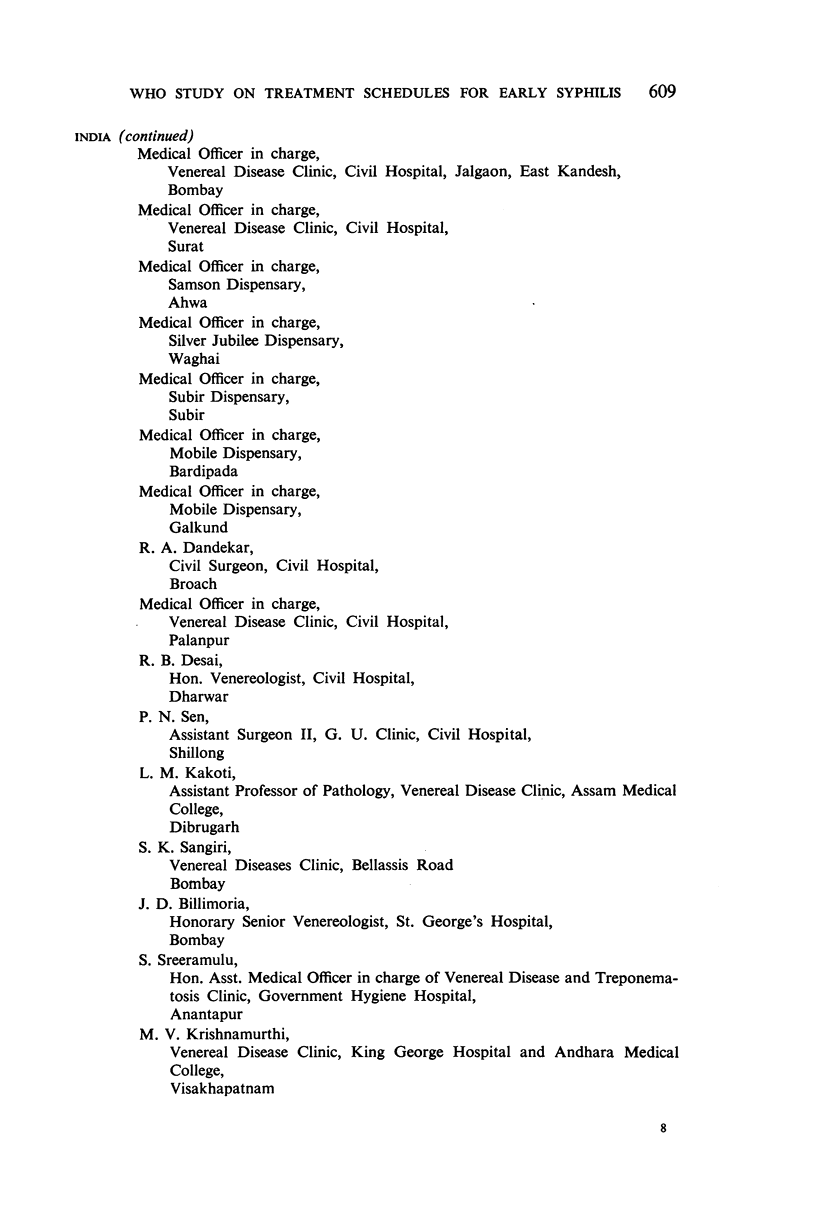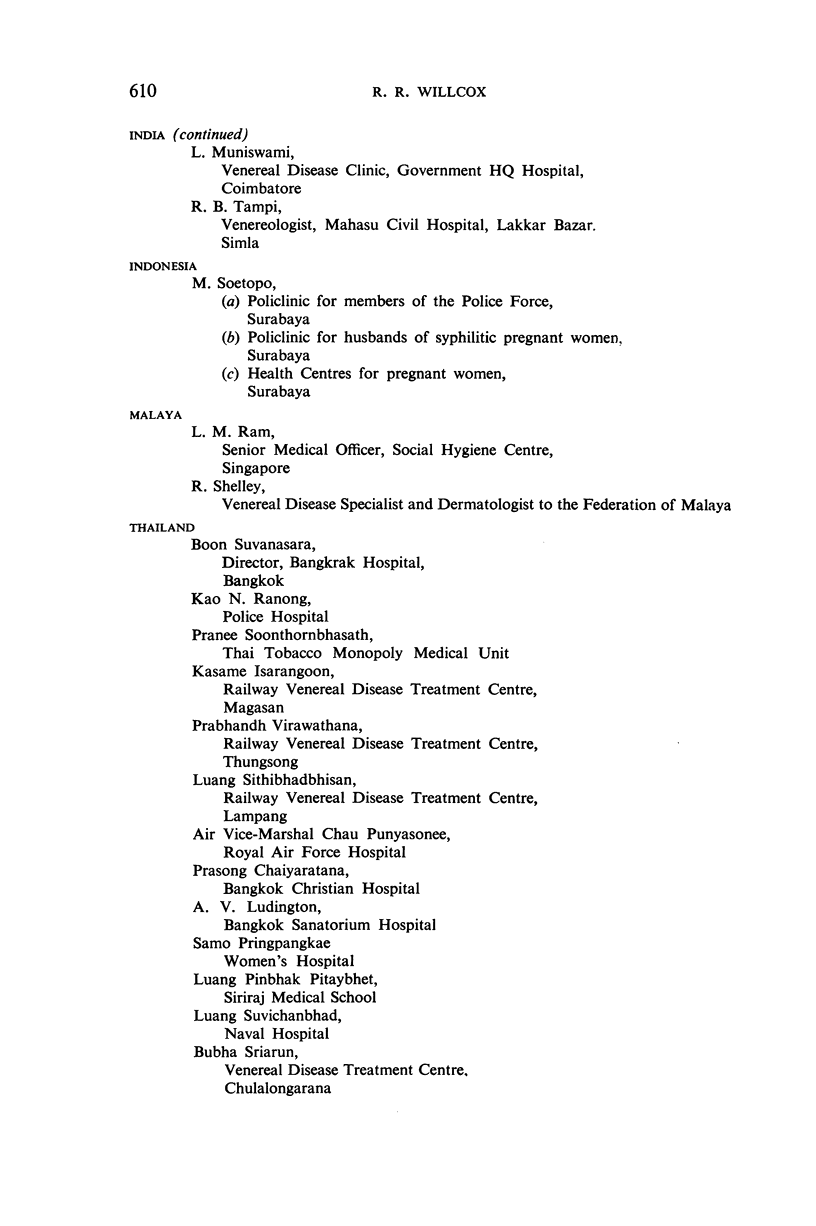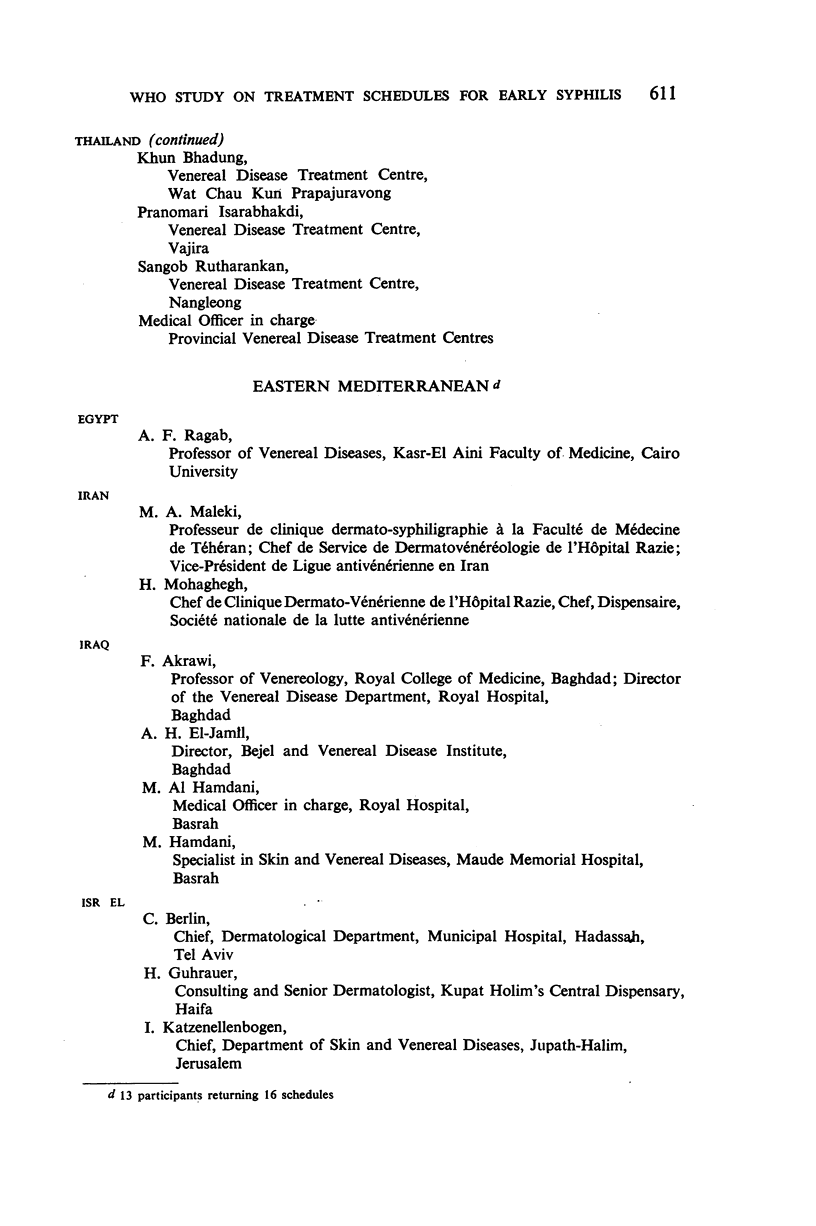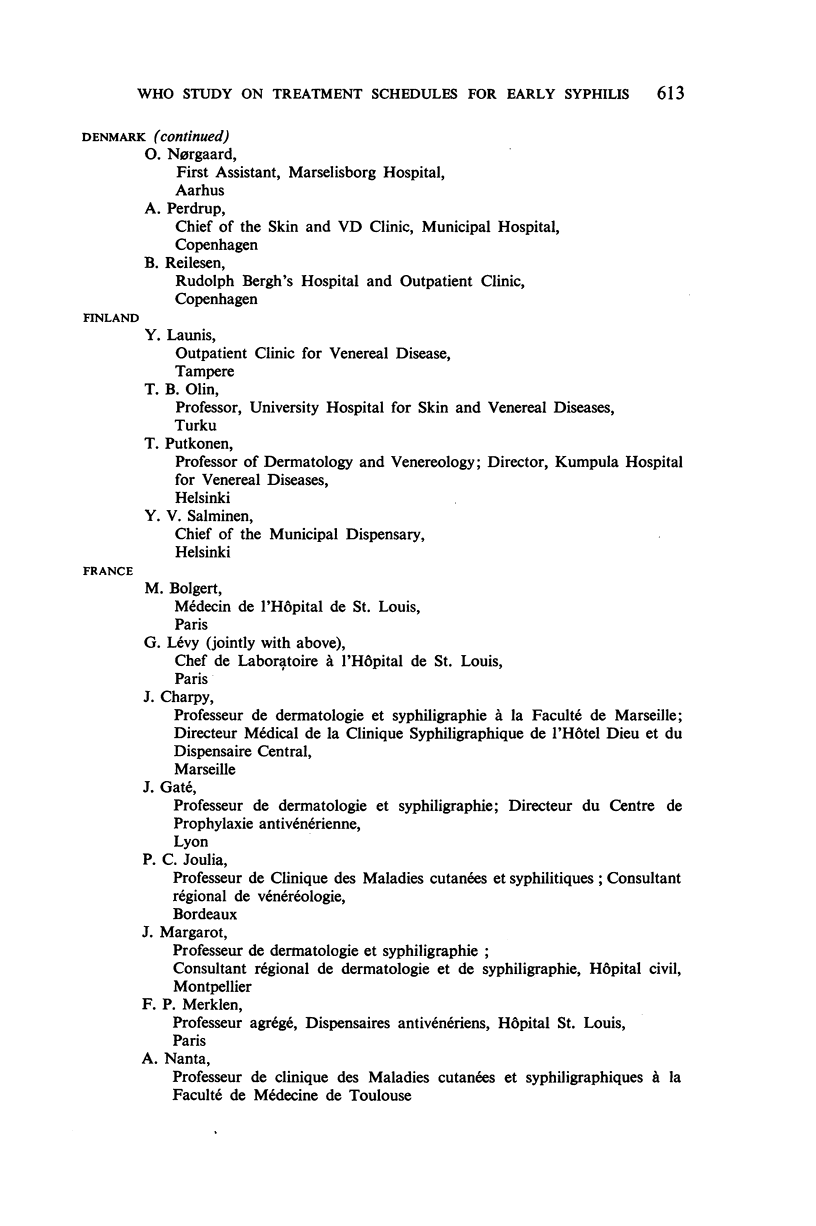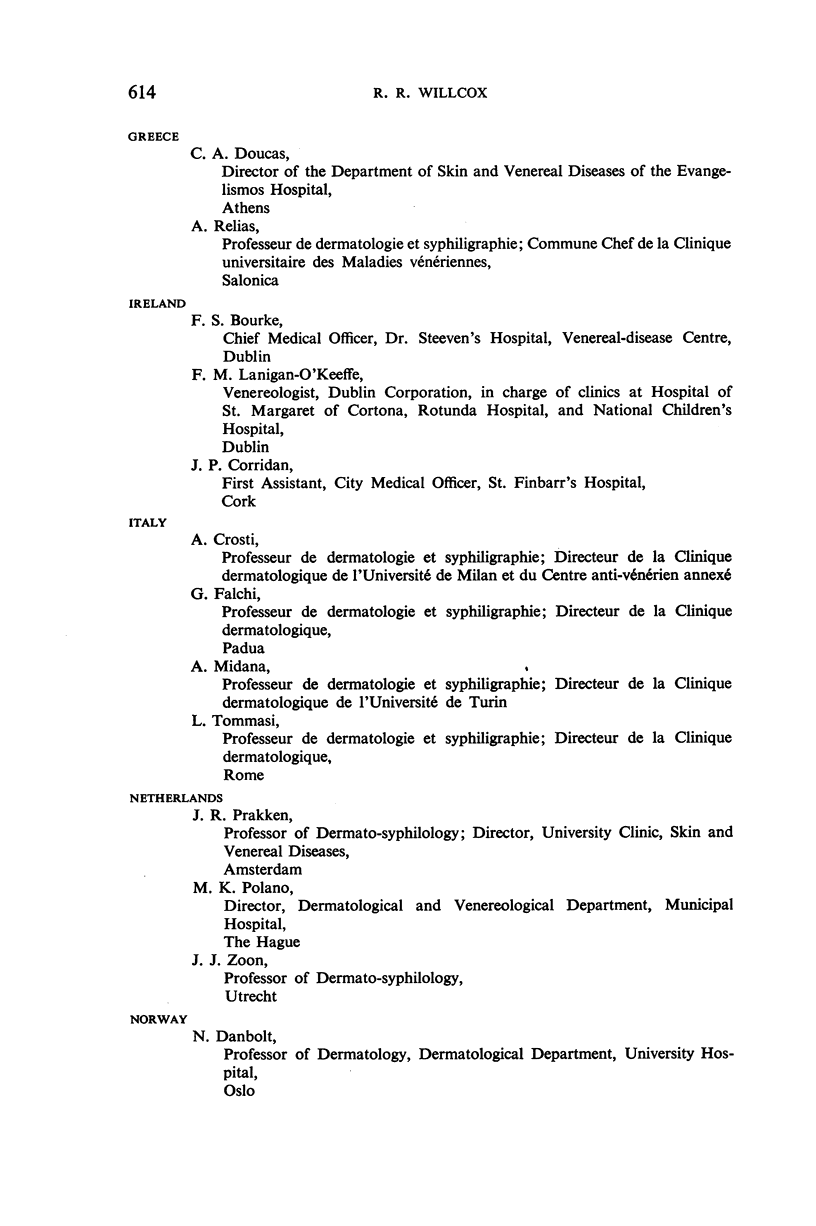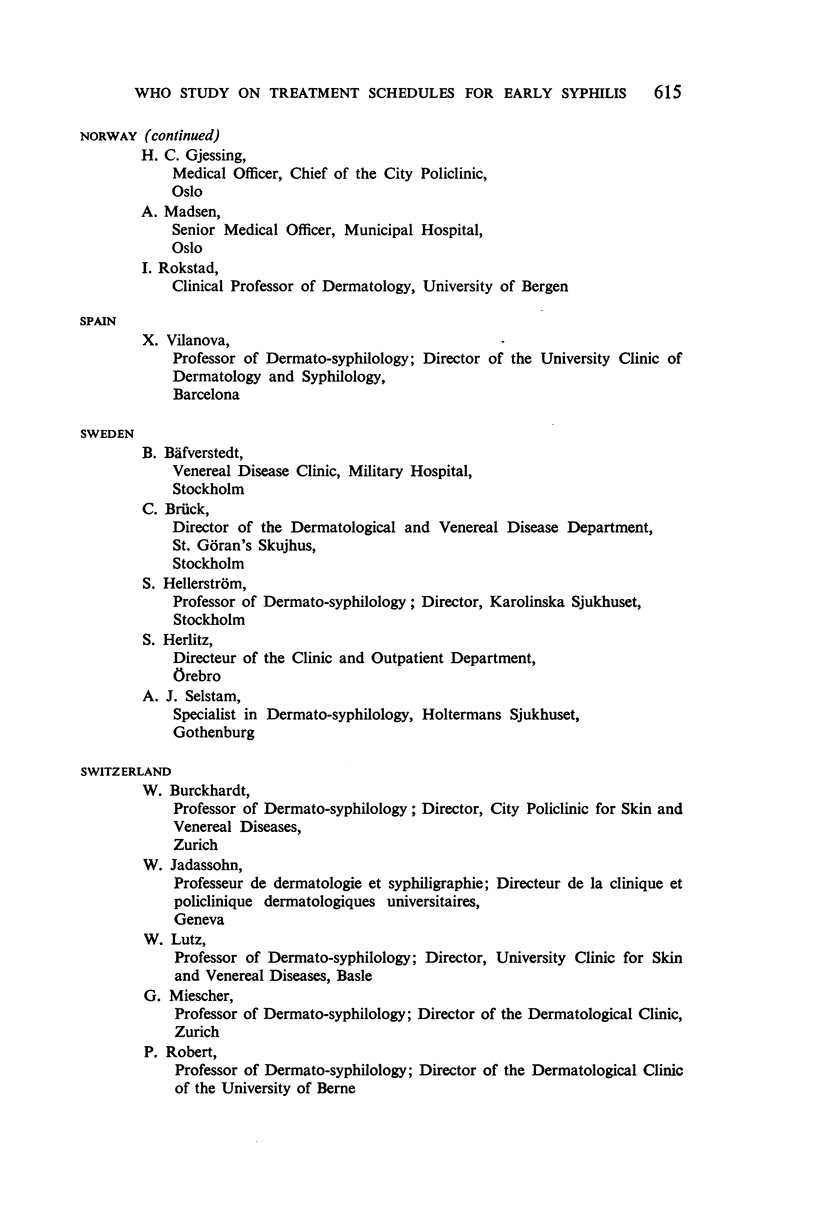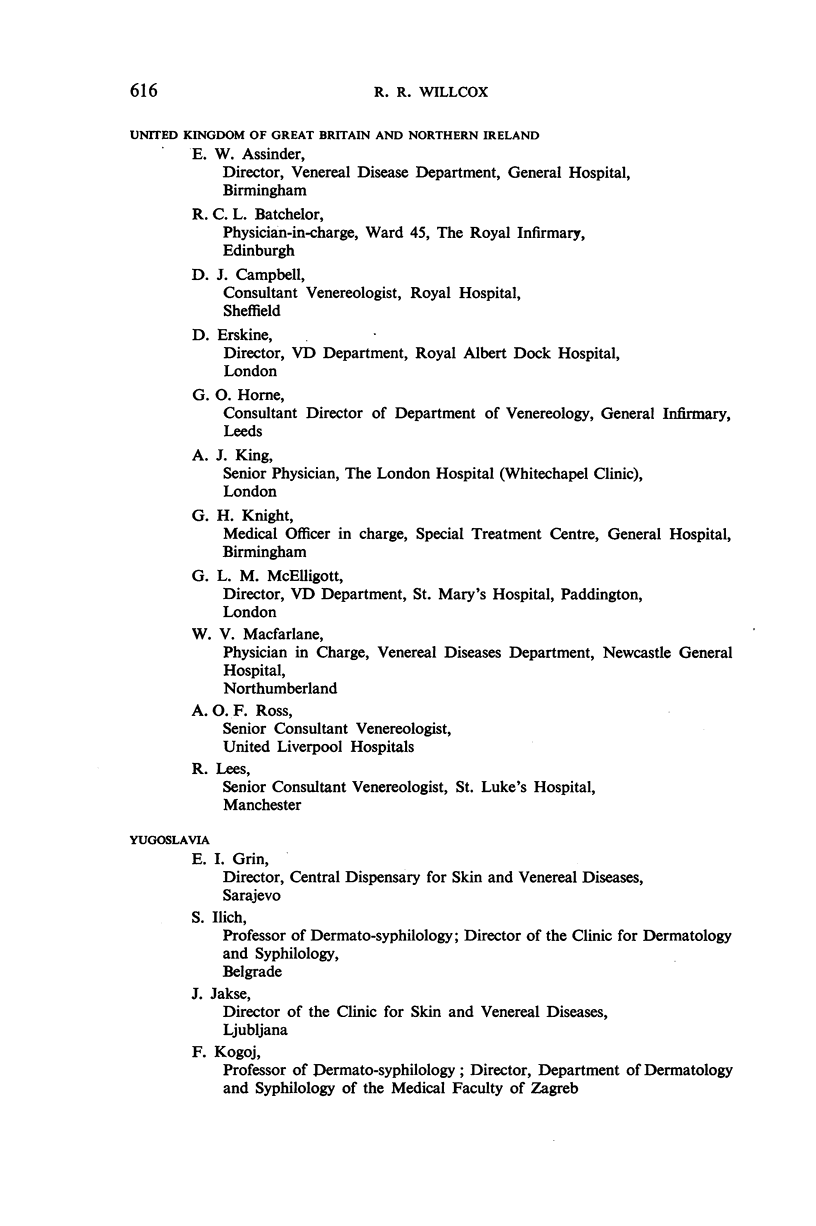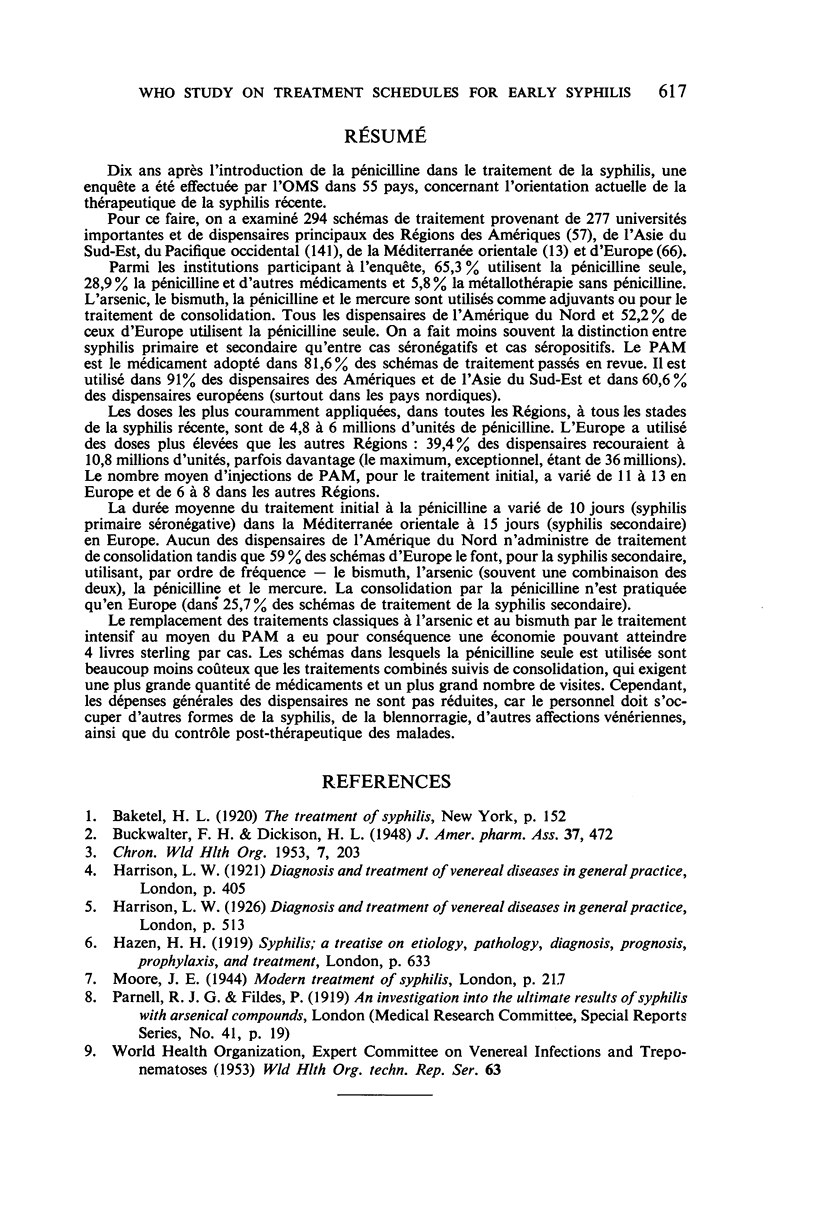Abstract
Ten years have elapsed since penicillin was introduced in the treatment of syphilis. In order to appraise recent trends in syphilotherapy in the world, WHO carried out a detailed study of treatment practices in early syphilis. A questionnaire was circulated to leading venereologists and clinics in the world, and 277 replies were received from 55 countries giving particulars of 294 schedules.
A total of 65.3% of the participants used penicillin alone and 28.9% used it in combination with other drugs. In North America all clinics relied solely on penicillin as against 52.2% in Europe; and procaine penicillin G in oil with aluminium monostearate (PAM) was used in 91% of clinics in the Americas and Asia and in 60.6% of European clinics. The most common dosage of penicillin in all stages of early syphilis was 4.8-6.0 million units; but appreciably larger doses were used in Europe than elsewhere, some 39.4% of schedules using 10.8 million units or more. There were single instances of 36 million units being given. Consolidation treatment was given in none of the North American clinics; seldom in Asia; by about one-third of the participants in Central and South America; and, for secondary syphilis, in 59% of European schedules.
This study shows that with intensive treatment with PAM the saving in drug cost to clinics over the classical courses of arsenic and bismuth may be as much as £4 per case, but the overhead expenses are, of course, not reduced.
Full text
PDF